

First Quarter 2023 nedairyfoods.org | neastda.org BUSINESS Finding Opportunities Amidst Inflation HISTORY A New York City Milk Hero FRONT DESK Meet Your Board of Directors BEST PRACTICES Challenging Traditional Norms in Manufacturing Industry Forecast Issue 20 23
Document size guide for full page ads do not send ads with crops/bleed marks
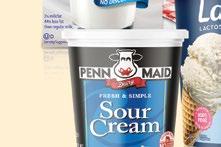

BLEED: 8.5 x 1 otal size must equal this









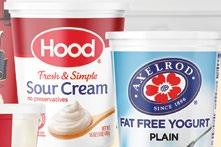



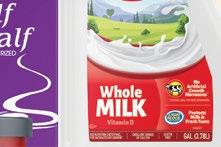

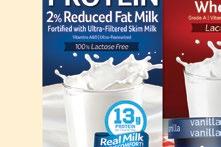
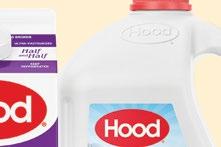


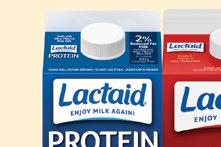






Bleeds allow you to run artwork to the edge of a page. On a press, the artwork is printed on a large sheet of paper and then trimmed down to size. If you do not allow for a bleed, any misalignment while cutting will result with the artwork not running to the edge of the paper resulting in a white borde

Trim: 8.25 x 11”
Safe Area: 7” x 10:
The safe area (white block shown on this doc) is where no important text should go beyond. This ensures importan information is not cut o
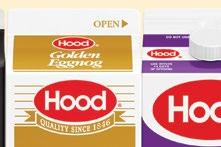




































































You need breakthrough pac kag ing on t he shel f. We have innovative solutions. You + WestRock = Unrivaled Advantage We understand the challenges you f ace in the marketplace. From protecting your product as it travels, to making a strong first impression on the shelf, it ’s a tough journey. We leverage consumer insight with an ex tensive substrate port folio and printing knowledge to create custom packaging that gives you an unrivaled advantage. Learn more about our unique packaging options at ww w.westrock.com. © 2016 WestRock Company. All rights reserved worldwide. For further information, please contact: john.bucklin@westrock.com | 585-507-7298





STAY CONNECTED www.nedairyfoods.org www.neastda.org 5701 EAST CIRCLE DRIVE SUITE 108 #277 CICERO, NY 13039 315-452-MILK (6455) 20 23 buyersguide.neastda.org Industry Forecast 4 • Northeast Dairy Foods Association, Inc. FEATURES FRONT DESK 06 PRESIDENT’S MESSAGE, NDFA Economic Forecasting After a Pandemic BY DANIEL LAUSCH 07 PRESIDENT’S MESSAGE, NDSA My Best Prediction is Optimistic Uncertainty BY MELISSA FRYER 09 FROM THE EDITOR Taking on a New Role BY COURTNEY KLESS 10 MEET YOUR NDFA & NDSA BOARD OF DIRECTORS 18 LEGISLATIVE REPORT States to Tackle Several Issues in 2023 BY PAUL HARVEY 20 ECONOMIC OUTLOOK Food Inflation Remains High BY GARY LATTA 26 SOMETHING TO CONSIDER Nathan Straus: A New York City Milk Hero BY GARY LATTA contents First Quarter 2023 • Volume 6, No. 1 TOOLS OF THE TRADE 51 Reaching the Gen Z Audience to Help Fill Positions BY BRIAN BLUFF 54 Group Health Insurance Can Help Hire and Retain Good Employees BY AGRI-SERVICES AGENCY 56 Top 5 Ways to Leverage Your Website and Customer Data BY BRIAN BLUFF 60 Seach Engine Trends for the Dairy Industry 62 OSHA Updates and Top 2022 Violations 30 Members Share Their Outlook for 2023 BY COURTNEY KLESS 36 Let’s Make It a Collaborative Year BY ROB FULTON, PAMD 48 Flexible Labor Program: Challenging Traditional Norms in Manufacturing BY MICHELLE
Finding Opportunities in Your Ag Retail Businesses Amidst Inflation BY
NGO 50
CHRIS LAUGHTON
BUSINESS OPERATIONS MANAGER
Leanne Ziemba
DIRECTOR OF REGULATORY AFFAIRS
Paul Harvey
PRESIDENT
Daniel Lausch Lactalis American Group
VICE PRESIDENT
Jodi Smith Krzysiak
Upstate Niagara Cooperative
TREASURER
Randi Muzumdar HP Hood LLC
SECRETARY
Ryan Elliott Byrne Dairy
Cheese Aims to Change the Way America Eats BY COURTNEY KLESS
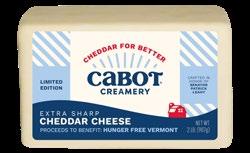
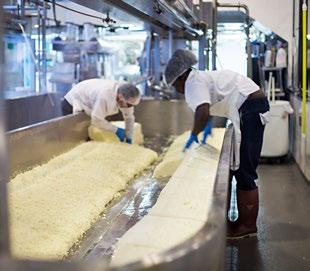
40 NDSA MEMBER PROFILE
At Alfa Laval, Innovation is the “Backbone of Who We Are” BY COURTNEY KLESS
PUBLISHER/DIRECTOR OF SALES
Bill Brod billbrod@nedairymedia.com
EDITOR
Courtney Kless courtneyk@nedairymedia.com
CONTENT DIRECTOR
Steve Guglielmo steveg@nedairymedia.com
RESEARCH & DEVELOPMENT COORDINATOR
Athena Cossette athena@nedairymedia.com
GRAPHIC DESIGNER
Robin Barnes
SALES
Tim Hudson thudson@nedairymedia.com
Lesli Mitchell lmitchell@nedairymedia.com
Hannah Gray hannahg@nedairymedia.com
CONTRIBUTORS
Agri-Services Agency, Brian Bluff, Rob Fulton, Paul Harvey, Gary Latta, Chris Laughton, Michelle Ngo
PRODUCED BY
Northeast Dairy Media
Editorial correspondence should be directed to courtneyk@nedairymedia.com
PRESIDENT
Melissa Fryer
Alfa Laval
VICE PRESIDENT
Paul Knoerl
Pactiv Evergreen
TREASURER
Ryan Osterhout KCO Resource Management
SECRETARY
Bruce Alling
Double H Plastics, Inc.
Advertising correspondence and materials should be sent to lmitchell@nedairymedia.com
POSTMASTER: Send address changes to lz@nedairyfoods.org
An official magazine of the Northeast Dairy Foods Association, Inc., a nonprofit organization. This publication carries authoritative notices and articles in regard to the activities and interests of the associations. In all other respects, neither the association nor the producer of the publication, Northeast Dairy Media, is responsible for the contents thereof or the opinions of the contributors.
The entire contents are © 2023 by Northeast Dairy Media. Nothing may be reproduced in whole or in part without written permission of the publisher. The association and Northeast Dairy Media reserve the right to print portions or all of any correspondence mailed to the editors without liability on its part and no such correspondence will be returned.
Visit Northeast Dairy Foods Association online at nedairyfoods.org for current information on association programs and services, or call the association at 315-452-MILK (6455). Questions and comments may also be sent to the association at oo@nedairyfoods.org.
NED Magazine | First Quarter 2023 • 5
Northeast Dairy Magazine Team
Northeast Dairy Foods Association, Inc.
contents First Quarter 2023 • Volume 6, No. 1
Northeast Dairy Suppliers Association, Inc.
38
Member Announcements
Welcome New Members
New Products
Leanne’s Kitchen
Advertisers’ Index 66 The Last Word
42
43
46
64
65
MEMBER NEWS
Talk about a challenge!
Forecasting the economic engine that powers the dairy business, farm to table, is interesting to say the least.
I remember being in college, and deciding on a career path, and the overall theme that I followed was “people always have to eat.” When I was finishing high school, the steel mills were closing after years of decline and unemployment was at 10%. My theory was that taking a job/career in the agriculture/food business would keep me steadily employed full time. That has kept me employed all these years in the dairy/milk business. Steady employment has a nice sound and feeling to it, versus short-term employment of highs and lows.
Consumers will continue to purchase because they always have to eat something, but what modifications will they make and what dairy products will they consider
Economic Forecasting After A Pandemic
 BY DANIEL LAUSCH PRESIDENT, BOARD OF DIRECTORS, NORTHEAST DAIRY FOODS ASSOCIATION, INC.
BY DANIEL LAUSCH PRESIDENT, BOARD OF DIRECTORS, NORTHEAST DAIRY FOODS ASSOCIATION, INC.

purchasing when treating themselves? Maybe that treat is a container of ice cream or a jug of whole or chocolate milk. They may purchase eight ounces of cheese versus 16 ounces – or an even larger package. Either way, consumers are not going to stop eating dairy products like cheese.
With or without a recession in 2023 or 2024, the people of our country will need to continue to purchase dairy products and prepare something to eat every day.
ASSOCIATION UPDATES
After several years leading our association, Ozzie Orsillo has departed as the executive vice president of the Northeast Dairy Foods Association. His talents and years of experience leading our organization will be missed as the ring master at our annual industry events, as his next employment is outside the dairy and food industry. There will be a search to find a new executive vice president to lead our Northeast Dairy Foods Association in 2023 and beyond.
SAVE THE DATES 2023 MEMBER EVENTS
MAY 17
Northeast Dairy Blender
THE ALOFT HOTEL
Buffalo, New York
JULY 12
Annual Dairy Customer Appreciation Clambake and Pig Roast
THE SPINNING WHEEL
EVENT CENTER
N. Syracuse, New York
Bruce W. Krupke Memorial Golf Tournament
ROGUE’S ROOST GOLF COURSE
Bridgeport, New York
AUG 16-18
Annual Dairy Convention
MOUNT AIRY CASINO
Mount Pocono, Pennsylvania
6 • Northeast Dairy Foods Association, Inc.
Front Desk
Outlook for 2023?

My best prediction is optimistic uncertainty.
There has been much discussion and anxiety within our industry regarding this topic, and I feel somewhat like Johnny Carson’s Carnac the Magnificent, where I just place an envelope to my forehead with random predictions for 2023. Could those predictions really be any more ambiguous or fuzzy than those coming from top economists? If we look at 2022 as a predictor for 2023, dairy production would increase 1.2% with 18% of product exported. Exported product is predicted to increase this year, driven by rising demand in China, Mexico, and Southeast Asia. The questions
My Best Prediction is Optimistic Uncertainty
BY MELISSA FRYER PRESIDENT, NORTHEAST DAIRY SUPPLIERS ASSOCIATION, INC.

are: will China’s COVID policies and restrictions let up enough to allow for further growth? Or will inflationary pressures, that are increasing prices and decreasing disposable income, cause consumers to consider products other than dairy? The last few years have taught us that many worldwide consumers find dairy to be a comfort food, which continues to be considered a necessity in uncertain and chaotic times. Many even refer to it as an “allowable indulgence” both in terms of money spent and nutrition. Because of those factors, I am cautiously optimistic about 2023.
Despite inflation at levels not encountered since the 1970s, there are additional positive indicators. The labor market remains strong as
a result of pandemic retirements, lack of immigration, and employees leaving the work force. Help wanted signs continue to be the norm at many production facilities, restaurants, and other businesses. The supply chain is improving, which should help to bring down some of the increased costs manufacturers have had to bear throughout 2022. The strength of the dollar is also working in our favor, especially for those businesses dependent on goods and materials supplied from outside the U.S. Optimistic economists say avoiding a recession is at best going to be a slow process given the Federal Reserve’s aggressive moves to reduce inflation. We hope the articles in this issue of Northeast Dairy Magazine and the
NED Magazine | First Quarter 2023 • 7
Front Desk
weekly Northeast Dairy Connection newsletter help you to navigate these and other emerging questions.











































































































































































































Dairy industry producers and suppliers, like myself, will undoubtedly need to make adjustments as we navigate the 2023 economic landscape. Some economists, including at least one Federal Reserve Bank CEO, are predicting a rosier inflationary outlook. Even so, anticipated interest rates hikes will affect business operations both here and abroad. The dairy industry will not be immune to these increased costs of doing business and will be looking at ways to simultaneously cut costs, while staying innovative to attract new customers. Sustainability will also be a driving factor, which can contribute to cost savings. Many new initiatives lead to additional capital projects, which
involve reviewing process operations to increase efficiency, and investing in the equipment to make the increases a reality. Similar to how the pandemic highlighted modifications required for some process operations, inflation may unearth cost savings measures that will prove advantageous well into the future.




























During these uncertain and chaotic times, it is important to stay connected to others in our industry. We hope you will take advantage of the exciting events being planned for 2023. The Dairy Blender, held in May, will highlight several of our dairy processor members. We hope all members take advantage of connecting and reconnecting with hundreds of our dairy industry colleagues at the Bruce W. Krupke Memorial Golf Tournament and Clambake, which will be held on
July 12. To round out our 2023 events, we have a full slate of speakers to present at our annual conference in August. They will provide information on several facets of the dairy industry and current trends. In addition, supplier members will be exhibiting, and will be available to discuss their products and how they can benefit our processor members. We look forward to welcoming you at all of our 2023 events.









































































As many members have commented through the years, the dairy industry is resilient. We have weathered economic uncertainty and hardship before, and emerged stronger. I believe the economic challenges we face in 2023 will prove that yet again – so says the envelope.

The best-in-class half-gallon gable top machine...the EH-84! Cedar Rapids, Iowa • 319-399-3200 • www.evergreenpackaging.com ©2023 Pactiv Evergreen Inc. All Rights Reserved. SmartPak is a trademark of Evergreen Packaging LLC, a subsidiary of Pactiv Evergreen Inc. You asked for Quick Setup You asked for Better Visibility... You asked for Increased Accessibility You asked for Repeatable Package Performance... You asked for the same great Shelf Life Optimization features... You asked for all of these benefits to be available in a Half-Gallon and SmartPak™ Gable Top format. Now you have it! Visit www.EvergreenPackaging.com/EH-84 to see the EH-84 in operation. 8 • Northeast Dairy Foods Association, Inc.
Front Desk
Taking on a New Role

 BY COURTNEY KLESS EDITOR, NORTHEAST DAIRY MAGAZINE
BY COURTNEY KLESS EDITOR, NORTHEAST DAIRY MAGAZINE
With the new year comes some changes for Northeast Dairy Magazine . This


With that being said, one of my main goals for 2023 is to include more members – and member voices – in

Catch up on previous issues of Northeast Dairy Magazine. issuu.com/nedmagazine READ NOW Front Desk
BOARD MEMBERS
The Northeast Dairy Foods Association and the Northeast Dairy Suppliers Association
are fortunate to have such a well-rounded, experienced group of people from every aspect of the dairy industry who give their time to guide our associations and help make decisions that assist and protect the interests of our members.
Here are the current members of the boards of directors.

NORTHEAST DAIRY FOODS ASSOCIATION
Editors Note: These interviews were edited for clarity.
1. Why did you decide to join the NDFA Board of Directors? I replaced the prior Lactalis representative on the NDFA Board of Directors 11 years ago.

2. What has been your favorite part? Talking and networking with other folks in the milk and cheese business.
3. How long have you been in the industry? 42 years.
1. Why did you decide to join the NDFA Board of Directors? Our former president, Bill Byrne, Jr., served on the NDFA Board of Directors for


10 • Northeast Dairy Foods Association, Inc.
Daniel Lausch, Director, Milk Procurement, Lactalis USA Inc. PRESIDENT
Jodi Smith Krzysiak, Upstate Niagara Cooperative VICE PRESIDENT
Ryan T. Elliott, Esq., Management, Byrne Dairy, Inc. SECRETARY
Meet Your Board
many years. When Bill retired from our company, he also made the decision to resign from a number of board positions, including the NDFA. Around that time, I was nominated by our senior leadership team to serve in Bill’s place. It was, and remains, a great honor and privilege to represent Byrne and serve in a leadership capacity within NDFA.
2. What has been your favorite part? The strength of the NDFA remains its membership. The same holds true at the Board of Directors level, where we’ve been fortunate to attract great leadership from many of the top processors in the Northeast. As with most trade associations, NDFA’s Board of Directors work for different organizations, hold different jobs within those organizations, and often operate in different fields and markets. So, when we convene as a board, we’re placed in a unique position as compared to our day-to-day professional lives. To remain productive, we must look at our organizations in a more holistic manner and constantly strive to understand a range of topics that may impact our industry. Personally, I’ve found it’s easy to become entrenched in the internal environments that exist within our separate companies, careers, and lives. Being a NDFA member — and serving on its Board of Directors — presents countless opportunities to think about, engage with, and attempt to influence the ever-changing “external environments” that affect many of our businesses and industry at large.
3. How long have you been in the industry? A decade.
1. Why did you decide to join the NDFA Board of Directors? HP Hood and the Northeast Dairy Foods Association have a longstanding relationship. With 10 sites across the NDFA footprint, continuing our affiliation was not even a question for me when joining HP Hood in 2020. It is reassuring to see the board makeup continue to grow and evolve as our industry does as well.
2. What has been your favorite part? Working with the staff on legislative issue monitoring at the state level and returning to our full event schedule alongside the suppliers association. We accomplish more together.
3. How long have you been in the industry? 22+ years and counting! I did not grow up on a dairy farm, but from my first moment “in the industry,” I have been proud to be part of the dairy family.
Meet Your Board
2. What has been your favorite part? The people and the connections within the dairy industry.
3. How long have you been in the industry? 30 plus years.
1. Why did you decide to join the NDFA Board of Directors? I have served on the board to help the dairy industry in New York state.



1. Why did you decide to join the NDFA Board of Directors? As an effort to lend our voice to the greater good of the dairy industry and effect positive and lasting change from a policy level that will allow our industry to successfully progress in correlation with market and consumer demands.

2. What has been your favorite part? Listening and absorbing the knowledge from a group of proven and successful industry leaders over the past five years.
3. How long have you been in the industry? 19 years this July.
1. Why did you decide to join the NDFA Board of Directors? For the opportunity to work with others in the dairy industry to further our common interests.
CONTINUED ON NEXT PAGE ►
NED Magazine | First Quarter 2023 • 11
Randi Muzumdar, Senior Director of Dairy and Energy Procurement, HP Hood TREASURER
Kimberly Bukowski, Director of the Dairy Food Certificate Program, Cornell University
Timothy Cronin, General Manager – BelGioioso Cheese-Glenville/ Polly-O Cheese
Brian Froebel, Milk Regulatory Manager, Friendship Dairies
Meet Your Board
2. What has been your favorite part? Gaining an increased understanding of the regulatory opportunities that are facing the dairy industry.
3. How long have you been in the industry? 22 years.
Amie Gabriel, VP sales and Marketing, Cayuga Milk Ingredients

1. Why did you decide to join the NDFA Board of Directors? I had worked very closely with the late Jim Buelow, who had been active in the NDFA, and when Steuben Foods became an affiliate, I was asked to be on the board.

2. What has been your favorite part? I greatly enjoy the camaraderie with others in the industry, as well as the conventions and picnic. ‘Putting a face to a name’ as they say, and it brings us all closer together. I am also intrigued how politics affects the dairy industry as well as the food industry in general. There are new legalities constantly bombarding the manufacturing companies, and some make it difficult to operate. What NFDA does to get our voice heard by our political leaders in Washington and state capitals is probably our biggest asset to all associate members.
3. How long have you been in the industry? I grew up on the family farm, so I guess most of my life. After military service, I worked in a cream cheese factory before coming to Steuben Foods. I’ve been at Steuben 25 years now, and I was on the ground floor when we opened the dairy in 2006.
1. Why did you decide to join the NDFA Board of Directors? Being a member of NDFA and serving on the Board is a great way to ensure that Cayuga and our owners have an understanding on what is going on in the Northeast from a public policy standpoint and what opportunities and challenges are being experienced by others in the industry.
2. What has been your favorite part? Working with our peers in the industry to ensure that we have a on pulse future legislative changes that may be coming, as well as having the ability to work together in pre-competitive areas where we have common challenges (i.e. workforce development).
3. How long have you been in the industry? I’ve worked in the dairy industry for over 17 years and served in several roles that have functioned across sales, marketing, operations, and financial aspects of various dairy companies.

1. Why did you decide to join the NDFA Board of Directors? As President of Northeast Dairy Foods from 2003 through 2010, I am a member of the board.

2. What has been your favorite part? The Board has been effective with dealing with dairy industry issues and legislation for many years. The ability to meet and deal with the faces of many industry customers, allies, competitors, and legislators has been invaluable.
3. How long have you been in the industry? I have been in the dairy industry for 57 years.
1. Why did you decide to join the NDFA Board of Directors? and 2. What has been your favorite part? As a cooperative, we value having a representative on the NDFA Board of Directors to better understand the issues concerning the processing side of the milk business and having input on the issues that directly affect the milk supply segment. It is also important for us to get to know more of the leadership of the processors and han-

12 • Northeast Dairy Foods Association, Inc.
Ray Gerwitz, Dairy Manager, Steuben Foods Inc.
Matt Hendricks, Dairy Farmers of America
Lewis (Butch) Miller, President, Queensboro Farm Products Inc.
1
Lynn Murray, lifetime family dairy farmer and a longtime board member of Jefferson Bulk Milk Cooperative
dlers in the Northeast and connect a person to the voice on the phone. The advocacy for the dairy industry that this board pursues is the most important function from our perspective and the opportunity to create contacts in every aspect of the industry is also very valuable to us.
where the leader has left unexpectedly. It’s a lot of work for the Board to find a replacement and get him or her acclimated to the staff, the Board, and the members.
2. What has been your favorite part? I enjoy meeting fellow leaders in our industry and developing relationships, which in turn make out industry a stronger, more cohesive group.
Meet Your Board
1. Why did you decide to join the NDFA Board of Directors? For a dairy processor our size, it makes sense for someone from Chobani to sit on this board.
2. What has been your favorite part? Networking, expanding relationships, understanding all the challenges in our industry, offering my experience, and socializing with great people
3. How long have you been in the industry? 12 years with Chobani. The first eight years, I ran transportation. The last four years, I head up our Dairy Procurement Team.
3. How long have you been in the industry? Great question! Officially, when I turned 16 and went on the payroll, 43+ years. Unofficially, since I was 3 years old. That’s when I toddled into the plant to get my first Popsicle from one of the nice ladies who was packing them after dinner one night as my parents were taking a nap during the CBS Evening News with Walter Cronkite (1966).
2. Why did you decide to join the NDFA Board of Directors? I joined to share my experience, network with industry leaders, and increase my knowledge of the dairy industry in the Northeast.

3. What has been your favorite part? Building relationships and collaborating with fellow board members.
4. How long have you been in the industry? I’ve been in the dairy industry since 2007.
Brian Perry, EVP and Chairman, Perry’s Ice Cream Co., Inc.


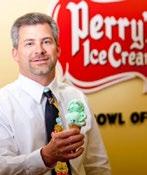
1. Why did you decide to join the NDFA Board of Directors? With Bruce’s passing, I felt I could help Ozzie and the association by joining the Board as I have been on other boards

Nathan
1. Why did you decide to join the NDFA Board of Directors? To learn more about the industry and the companies that make it up in the Northeast.
2. What has been your favorite part? The events, including the clambake and fall meeting, but also keeping up to date on governmental and industry happenings.
3. How long have you been in the industry? Dairy industry: 10 years. Food industry: 20+ years.
1. Why did you decide to join the NDFA Board of Directors? I joined the Board of Directors to become more involved in the industry, grow and expand my network, and learn more about industry updates and regulations.
2. What has been your favorite part? Collaborating with others in the industry.
3. How long have you been in the industry? I’ve been in the dairy industry since 2005.
NED Magazine | First Quarter 2023 • 13
Tony Nassar, Senior Dairy Procurement Manager, Chobani
Pistner, Plant Manager, Great Lakes Cheese
Adam Seybolt, Director of Manufacturing, Stewart’s Processing Corp.
Jennifer Turgeon, dairy sourcing manager, HP Hood LLC
CONTINUED
►
ON NEXT PAGE
Meet Your Board
NORTHEAST DAIRY SUPPLIERS ASSOCIATION
ers, and to promote improved working relationships between the dairy customers and vendors. The opportunity to support scholarships within the food science and dairy programs at universities was also a goal of mine to ensure future employees in our industry.
2. What has been your favorite part? My favorite part has been being able to meet new suppliers and contacts at our major customers to promote new technologies and emerging trends.
3. How long have you been in the industry? I have been in the industry over 35 years, including various sales roles at Cherry Burrell, APV, and Pactiv Evergreen.
1. Why did you decide to join the NDSA Board of Directors? To make a positive impact in the dairy industry.
2. What has been your favorite part? Interacting with Northeast Dairy members.
3. How long have you been in the industry? 22 years in the dairy industry.
1. Why did you decide to join the NDSA Board of Directors? I got involved with the NDSA Board of Directors at Bruce Krupke’s request, and to become more involved in the dairy industry.
2. What has been your favorite part? The people have been my favorite part. This industry is like one big family.
3. How long have you been in the industry? I have been in the industry 26 years.
1. Why did you decide to join the NDSA Board of Directors? About 10 years ago, Bruce Krupke approached me at a plant tour in Middlebury, Vermont and asked me if I wanted to join the board. I had been a member of the association for about three years at that point, and it was a great group of people, so I was happy to join the board.

Lisa
1. Why did you decide to join the NDSA Board of Directors? I joined the Board of Directors to share relevant perspectives and contribute to the longevity, reach, and collaboration between both associations, members, and consumers.
1. Why did you decide to join the NDSA Board of Directors? I joined the NDSA Board of Directors to further the networking opportunities of suppli-



2. What has been your favorite part? Meeting people and making friends with all of the great members. The board is a fun group of people to be around, and it’s been an awesome thing to be a part of.
3. How long have you been in the industry? 14 years.
2. What has been your favorite part? My favorite part is building relationships, attending the dairy events, and continuous education for all aspects of the industry. Ice cream also has a special place in my heart.
3. How long have you been in the industry? I’ve been working with the association and members for five years.

14 • Northeast Dairy Foods Association, Inc.
Melissa Fryer, Sanitary Heat Transfer Business Development Manager, Alfa Laval PRESIDENT
Paul Knoerl, Regional Sales Manager, Pactiv Evergreen VICE PRESIDENT
Ryan Osterhout, COO and managing partner, KCO Resource Management TREASURER
Bruce Alling, Regional Sales Manager, Double H Plastics SECRETARY
Bolduc, I provide insurance and risk management solutions for agribusiness companies with Brown & Brown Insurance
John Bucklin, Business Unit Sales Manager, WestRock
1. Why did you decide to join the NDSA Board of Directors? From my very first event with the Northeast Dairy Suppliers Association, I felt this was an organization, a welcoming group of people, who shared a passion to advance their industry. As a board member and manager of an important supplier to several dairy processors in the Northeast, I have gained valuable
insights into the world of dairy, and had the opportunity to discuss the many issues which affect all businesses, including WestRock and our focus on packaging.

2. What has been your favorite part? The annual convention and the clambake are sure to be the highlights of my membership. The chance to network with people from many backgrounds and businesses who all share a common goal of supporting the dairy industry.


3. How long have you been in the industry? Over 30 years.



Billy Elliott, Semiretired (previous employer, Northeast Great Dane)
1. Why did you decide to join the NDSA Board of Directors? I represented Johnson Refrigerated Truck Bodies, which is a premium product for transporting dairy products. My first contact was with Bruce Krupke, who was an incredible and special person. He reeled me in like a prize




CELEBRATING 45 YEARS SINCE 1978 www.careed.com | 800.462.6149 THANK YOU TO OUR DAIRY PROCESSING CUSTOMERS! Annual Dairy Convention MOUNT AIRY CASINO Mount Pocono, Pennsylvania Visit nedairyfoods.org for more information. AUG 16-18 Meet Your Board
►
CONTINUED ON NEXT PAGE
Meet Your Board
2. What has been your favorite part? The people! The folks associated with both the dairy foods and dairy suppliers associations are first rate.
3. How long have you been in the industry? 10 years in transportation.
1. Why did you decide to join the NDSA Board of Directors? I joined the Board to provide a fresh set of ideas that will help shape the future direction of our organization in an effort to bring more value to dairy processors.
1. Why did you decide to join the NDSA Board of Directors? The NDSA represents the most active association of its kind for our industry. I wanted the opportunity to contribute back to our market and help guide the ice cream segment forward. Also, it is a lot of fun getting to engage with such a wide swath of the supply base.
2. What has been your favorite part? Trying to improve the value experience both for the association members and the supply partners. The NDFA and NDSA have the greatest intersection of roles in the country. Each side is actively invested in their respective groups. The real key is to find ways to by a multiplier of that investment.
3. How long have you been in the industry? I have been in and out of the ice cream industry. In total, my experience is about 15 years. I have been a consumer goods packaging executive for nearly 30 years.
2. What has been your favorite part? My favorite part of being on the Board of Directors is connecting with other industry partners who have common goals. We help dairy processors be the best versions of themselves and I always learn something from the wealth of experience that exists on the board.
3. How long have you been in the industry? I grew up on a dairy farm, so you could say I’ve been in this industry my entire life! I’ve worked professionally in various aspects of dairy processing industry for 15 years.
2. What has been your favorite part? My favorite thing about being part of this organization is meeting and socializing with people you deal with on a daily basis.
3. How long have you been in the industry? I have been at my job with Agri-Mark for 44 years this January.



1. Why did you decide to join the NDSA Board of Directors? I joined the board when it was the Northeast Dairy Association back in the early 90s.
1. Why did you decide to join the NDSA Board of Directors? I joined the NDSA Board because I thought it was a great opportunity to get more involved in the industry.

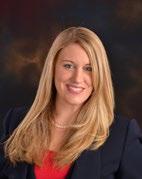
2. What has been your favorite part? My favorite part has been interacting with the other board members. It’s great to hear so many different ideas and perspectives.
3. How long have you been in the industry? I started with DFA full-time in 2010, but I grew up on a dairy farm, so dairy has always been part of my life.
16 • Northeast Dairy Foods Association, Inc.
Glenn Emory, General Manager, Weidenhammer New Packaging
Tristan Hrobuchak, Strategic Account Manager, CHR Hansen, Inc.
Gloria Little, Logistics Manager, Agri-Mark, Inc.
Wendy Martin, Energy Partner Consultants
Laura McCranie, Director of Fluid Milk Marketing, Dairy Farmers of America
1. Why did you decide to join the NDSA Board of Directors? I’ve worked extensively with the dairy industry and met Bruce Krupke at the clambake almost 10 years ago. Bruce impressed upon me his knowledge and kindness, and he immediately helped me feel comfortable with so many other members, introducing me to dozens of strangers who have developed into wonderful acquaintances since that day. I recognized the same character and values in many of those people, which made me want to get more involved, so when the opportunity to be a part of the board came along, I was excited to join and help shape an organization that creates opportunities for others just like I had experienced. The power of people and their relationships is something special.


2. What has been your favorite part? Every industry, including ours, needs talent and leadership, and I’m energized by the ability to help students gain some help in their journeys to make the world better. I immediately got involved with the scholarship committee and have enjoyed the connection to a younger generation who will ultimately help shape our world. I have tremendous faith in the potential of the many students the scholarship supports, and I am very bullish on the future having spent time absorbing the stories and resumes from such a diverse and talented pool of applicants every year. The future is bright!
3. How long have you been in the industry? I’ve worked in food, beverage, and dairy industries for 28 years. I’ve spent time in both the manufacturing and support sides of the business and have been fortunate to make so many great relationships over the years. From farm to fork, I’ve met some of the most talented and grounded people working in this industry.
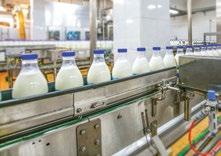
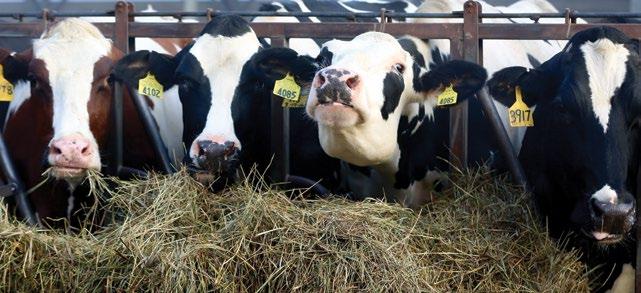
NDSA Board of Directors? Our company was a member for awhile, there was an opening on the board, and I was asked if I would be interested in filling a seat. I thought it would be a good opportunity to work with other members that we could connect with and work for moving their products.
2. What has been your favorite part? Being with other industry people at the conventions and other activities, networking.
3. How long have you been in the industry? 48 years.


1. Why did you decide to join the

NED Magazine | First Quarter 2023 • 17
Daniel Seitzer, Senior Corporate Account Manager, Ecolab Inc.
Rick Wadhams, Owner, Wadhams Enterprises Inc.
800-562-2235 | FARMCREDITEAST.COM VERTICALLY INTEGRATED AG BUSINESSES PROCESSING AND MARKETING EQUIPMENT • VALUE-ADDED AG BUSINESSES DAIRY SERVICE AND INPUT BUSINESSES • PARTNER WITH OTHER CAPITAL PROVIDERS FINANCING THE DAIRY INDUSTRY Meet Your Board
States to Tackle Several Issues in 2023
BY PAUL HARVEY, DIRECTOR OF REGULATORY AFFAIRS
As we continue to make our way through this new year, many of the state legislatures within our association region will continue to address issues stemming from the effects of the high inflation rates that we have seen over the past year. Inflation has measurably decreased year over year, however, leaving manufacturers and consumers to see decreased costs in some sectors, such as used vehicles, while higher costs remain in others.
There are several issues that states will tackle through their budget process as well as through separate legislation.



MINIMUM WAGE
State-level minimum wages received prominent placement from the governors of Connecticut and New York. Governor Lamont and Governor Hochul both indicated they would be interested in legislation or budgetary measures that would tie the hourly minimum wage to the rate of inflation so as to ensure future offsets against the cost of living associated with inflation.
New York State already has a prevailing $15 minimum wage in New York City and its suburbs of Long Island and
Westchester County, but the rest of the state sits below the threshold at $14.20 an hour. As the law stands now, any future increase in the minimum wage for upstate New York will be based on an annual impact review between the Department of Labor and the director of the Division of Budget. Connecticut will implement its state-wide $15 hourly minimum wage on June 1.
HOUSING
Officials in Maine, Massachusetts, New York, and Vermont will look very closely to see what they can do to assist municipalities in combating the rising cost of rent and growing homelessness in their states. Many of these states, however, are limited to what they can do in their capitals, and will have to lean on cooperation from residents and elected officials on the municipality and county level, since new construction, including housing, is zoned and permitted at these levels of government.
18 • Northeast Dairy Foods Association, Inc.
Legislative + Regulations Report
Many of these governors see affordable housing as a key piece of the solution to preventing future population declines, especially in New York and Vermont.
CLIMATE CHANGE




Massachusetts, New York, and Vermont will also simultaneously address climate issues in various parts of their economies, including infrastructure, housing, and transportation. New York has the most ambitious agenda, including a phasing out of natural gas heating and heating oil in residential buildings by 2030 (and 2035 for commercial buildings). This plan, of course, mostly depends on whether the electric grid can withstand the increase in demand and the market availability of climate-compliant products. New York again will also be looking to implement Extended Producer Responsibility (EPR) in the next state budget. Many stakeholders, including Northeast Dairy Foods Association, will be monitoring the latest developments as the budget season progresses. New Hampshire will also again be looking at how to address waste management solutions in the North Country this session.

ENERGY COSTS































Connecticut, Maine, New Hampshire, New York, and Vermont will be addressing the increase of energy costs by looking at what their state agencies can do to provide locally produced energy sources, while decreasing dependency on foreign oil sources. Connecticut aims to look towards wind power and hydroelectricity from Canada to assist in its diversification. In Maine, Governor Janet Mills authorized $450 in emergency assistance for heating fuel costs this winter while it seeks alternative sources. It is also interesting to note that many states, such as Connecticut and New York, allowed their gas tax holidays to expire at the beginning of the year without talks of extending them.










As always with the beginning of the legislative year, these are just a few of the issues that will be involved in the legislative mix this session. The legislative updates will be returning on March 7 for NDFA members, so check your email for the invitation. Finally, be sure to check you emails for information about Dairy Day 2023 in Albany!
Paul Harvey is the director of regulatory affairs for the Northeast Dairy Foods Association, Inc.













NED Magazine | First Quarter 2023 • 19
PEOPLE. PROCESS. TECHNOLOGY. kochsepara�on.com The engines that make our projects successful.
Legislative + Regulations Report
We are your complete dairy solutions provider.
ECONOMIC OUTLOOK Food Inflation Remains High
BY GARY LATTA
The year-end report from the U.S. Bureau of Labor Statistics (BLS) shows food inflation increased 10.4% over the 12 months of 2022 from the prior year. The 12-month percentage change in the consumer price index for all major categories last year was an increase of 6.5%. While overall inflation is showing signs of slowing down, food inflation remains high. Energy inflation eased a bit over the past few months, and is at 7.3% for the year, while shelter inflation is up 7.5% for the year.
The annual increase in food prices from 2021 to 2022 was 11.8% for in-home consumption and 8.3% for away-from-home consumption. BLS reported the month-to-month trend in overall food inflation did slow slightly from November to December. Inflation in the food category has become mixed, with decreases in fruits, vegetables, and other products offset by significant increases in eggs and other food groups.
Some observers attribute the easing of inflation in some food categories to

20 • Northeast Dairy Foods Association, Inc.
$0 $1 $2 $3 $4 $5 $6 $7 2018 2019 2020 2021 2022 2023 2024 Monthly U.S. retail fuel prices (Jan 2018–Dec 2024) dollars per gallon motor gasoline (regular) Short-Term Energy Outlook (STEO) forecast $5 00 $4 23 $3 70 $3 96 $3 32 $3 09 annual average diesel (on-highway) annual average Economic Outlook
Whole Milk, U.S. City Average Price per Gallon, 2012-2022: US Bureau of Labor Statistics
lower fuel costs. The energy category inflation rate was down 9.4% from November to December with gasoline down 9.4% and fuel heating oil down 16.6%. The inflation rate of fuel oil however was 41.5 % for year 2022. Diesel fuel, an important component in the food industry, has showed prices moderating recently after lofty climbs in 2022. The U.S. Energy Information Administration (EIA) tables show the average per gallon price of diesel in 2022 was $4.989 compared to $3.287 in 2022. A significant portion of food inflation can be is directly attributed to energy prices which impact every segment of the supply chain from farm to consumer.
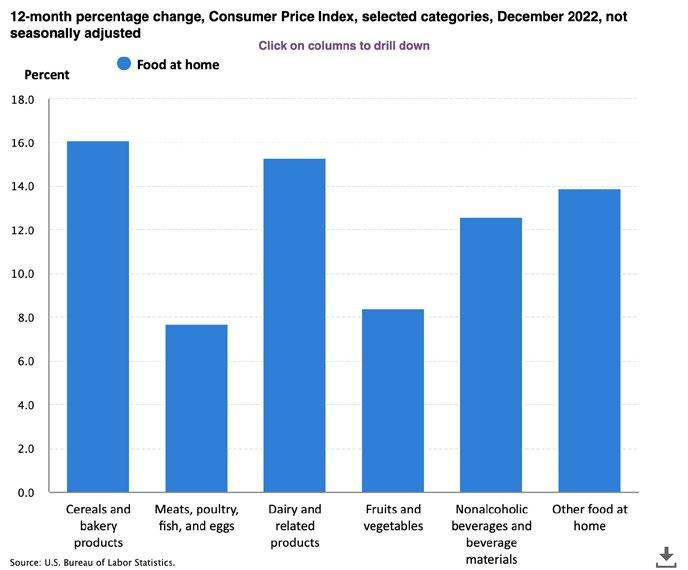
The latest EIA diesel and gasoline forecasts show prices are expected to decline in 2023 and 2024 after reaching
Protect Quality while Driving CIP Efficiency
Active OX+TM (EPA Reg. No. 1677-275) is a US-OMRI listed, no-rinse food contact sanitizer that empowers organic production operations to do more with less.
NED Magazine | First Quarter 2023 • 21
ACTIVE OX+TM
©2023 Ecolab Inc. All rights reserved. 59429/0300/0223 Ecolab Inc. 1 Ecolab Place St. Paul, MN 55102 USA 1 800 392 3392
off expected use concentration for Food Contact Sanitizing 42%+
Sanitizer* Reduce Consumption Cut CIP Downtime Positive ESG Impact ecolab.com/ActiveOX ECF1007 ActiveOX_Ad_7x4.875_v2.indd 1 2/15/23 4:58 PM Economic Outlook
*Based
Reduction in
multiyear highs in the first half of 2022. Retail prices for regular-grade gasoline are expected to average $3.32 per gallon in 2023, and continue to decrease to an average $3.09 per gallon in 2024. The average gas price in 2022 was $3.96 per gallon. The EIA projects on-highway diesel prices will decrease to average $4.23 per gallon in 2023, then decrease to $3.70 per gallon in 2024. These forecast price decreases are based on EIA’s expectation of lower demand growth for diesel and motor gasoline with continued high production of those products.
Some analysts like to remove the food, energy, and housing categories from the overall inflation category to describe the improving health of the economy. They call this the “core inflation rate.” Doing so portrays the economy in a better light and supports claims that inflation is slowing down. While this may be politically favorable to some, it might mask reality. Most Americans still need shelter, food, and fuel for travel. For 2023, USDA’s Economic Research Service (ERS) forecasts higher beef prices, but lower prices for chicken, dairy, eggs, and some vegetables.
USDA ERS just released their latest Food Price Outlook for 2023. They expect food prices to grow more slowly in 2023 than last year, but still above historical averages. In 2023, combined “all-food” prices are predicted to increase 7.1%. Food-at-home prices are predicted to increase 8.0%, and food-away-from-home prices are predicted to increase 8.2%. Egg prices are expected to increase 27.3% in 2023. Prices are expected to continue increasing for eight additional food categories that experienced consistent growth throughout 2022.
Similarly, the UK has experienced a recent slowdown in overall inflation,
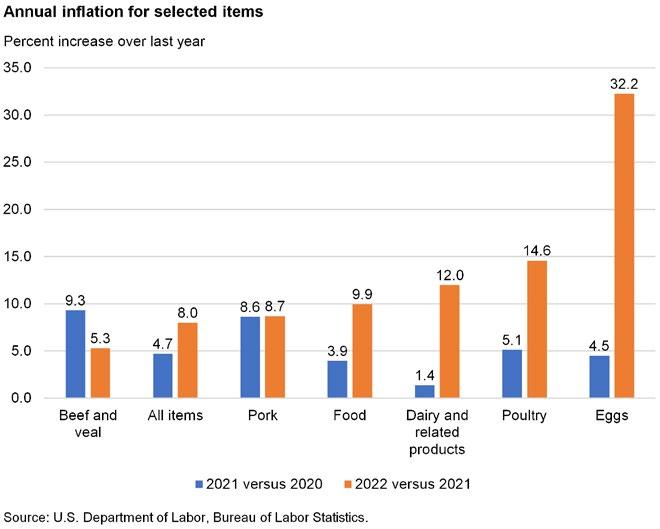
22 • Northeast Dairy Foods Association, Inc.
USDA Expects Key Food Item % Increases in 2023 Expected % Decreases in 2023 Eggs +27.3% Pork -3.0% Eggs +27.3% Beef/Veal -1.8% Fats & Oils +16.5% Fresh Fruit -1.7% Other Meats +12.8% Cereals/Bakery +12.0% Sugar/Sweets +10.6% Beverages +8.7% Dairy Products +8.0% Other Foods + 6.8%
Economic Outlook
but is still being squeezed by high food prices that have risen close to 17%.
Dairy product inflation in the UK has been alarming, with the price of milk climbing 50% during 2022.
Similar inflation and a variety of challenges have impacted New Zealand, Australia, and other major global dairy exporters. New Zealand is banking on the reopening of China as its COVID-zero policy comes to an end. Once Chinese consumers are free to move about again, dairy demand will no doubt surge, especially in the foodservice sector. Global dairy competitors all face similar internal challenges to varying degrees: high input costs, labor costs, and environmental compliance and similar hurdles. The war in Ukraine is largely responsible for higher input costs like energy, feed, and fertilizer, and ambitious environmental goals have challenged the EU, New Zealand, and other global dairy competitors. The Australian dairy industry is commit-
ted to minimizing its environmental footprint, including reducing greenhouse gas emissions intensity by 30% by 2030. The EU’s so-called Common Agricultural Policy (CAP) discourages dairy expansion and investment. For many European countries, CAP goals simply mean fewer farms and less cows.
The Food and Agriculture Organization of the United Nations Food Price Index (FAO) continued to drop in December after rising dramatically on a yearly basis. The index measures the monthly change in international prices of a basket of food commodities that incudes dairy.

In 2022, the FAO Dairy Price Index averaged 142.5 points, up 23.3 points (19.6 %) from 2021. Last year was the highest FAO annual average Dairy Price Index on record since 1990. FAO attributes most increases to Russia’s invasion of Ukraine in February 2022, which disrupted food, energy, and fertilizer supplies.
Dairy Management Inc. and the National Milk Producers Federation projected overall milk prices in 2022 are likely to set a record high, reaching at least $25.50 per hundredweight (cwt). That price will be at least $1.50 higher than the previous record of $24.00 set in 2014. In late 2022, the Economic Research Service (ERS) of the USDA posted new data showing the consumption of dairy products in the U.S. set a record high in year 2021. Per capita dairy consumption went from 655 pounds in 2020 to 667 pounds in 2021. Back in 1975, per capita dairy consumption was 539 pounds. Despite lower trends in fluid milk consumption, Americans are more than making up the difference with cheese, butter, and yogurt.
The U.S. has enjoyed brisk dairy exports that exceeded 18% of U.S. milk solids every month since February 2022. U.S. dairy product prices have been very competitive within the international marketplace, and have been
NED Magazine | First Quarter 2023 • 23
Food and Agriculture Organization (FAO) of the United Nations, Jan. 2023
Economic Outlook
one of the drivers of export sales. The USDA and other analysts are projecting weaker U.S. exports in 2023, primarily because of an expected rebound in UK milk production. The U.S. Dairy Export Council (USDEC) remains focused on the key destinations of Southeast Asia, China, Mexico, Korea, and Japan. They estimate about 75% of U.S. dairy exports are now bound for these five areas, all of which are projected to experience a greater slowdown of inflation than the global average in 2023.

In December 2022, the U.S. Trade Representative Office launched its second request for a dispute settlement with Canada regarding violations of
its USMCA dairy product obligations. Objections stem from Canada limiting tariff rate quota allocations to U.S. dairy products. As we await the outcome of this second challenge, Canada remains defiant.
Work on the next Farm Bill is in progress and many Congressional representatives have had meetings in their districts. Pennsylvania Congressional Representative Glenn Thompson is chairperson of the House Agriculture Committee. Ideas for reforms to the Federal Milk Marketing Orders are emerging and some observers predict USDA hearings will take place in 2023. The American Farm Bureau Federation and other dairy groups
have been working on their ideas for improving the Federal Milk Order system. One issue under discussion is the Class I fluid mover. The Farm Bureau recommends moving back to the “higher-of” fluid milk formula, whereas Wisconsin’s Edge Dairy Farmer Cooperative seeks a new approach with their “Class III Plus” proposal. Key issues are: Class I differentials, make allowances and pooling. Details of these and individual ideas can be found on their respective websites.
U.S. milk production in the 24 major states was up 0.9% in December of last year following a 1.1% increase in November. Milk production growth in 2022 was down each month for
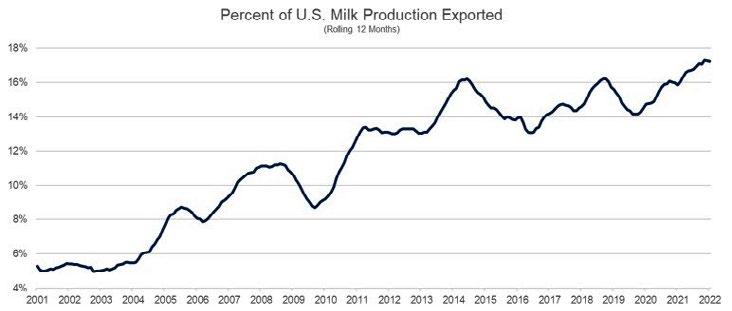
24 • Northeast Dairy Foods Association, Inc.
Economic Outlook
Source: These charts first appeared on The U.S. Dairy Exporter Blog, a publication of the U.S. Dairy Export Council.
the first half of the year in 2022, but up each month over the second half. Cow numbers increased during the last quarter of 2022. Production per cow was down in the first quarter of 2022, but up the remainder of the year. The USDA is expecting lower milk prices in 2023, with steady to higher feed costs resulting in fewer dairy cows this year. The average production per cow is expected to be unchanged at 24, 370 pounds annually. The milk production forecast for 2023 has been adjusted to 229.2 billion pounds, up from the 226.8 billion pounds of annual production.
Projections for dairy exports are being raised as the U.S. is expected to remain globally competitive with both price and quality in 2023. Imports are unchanged. U.S. domestic demand is expected to weaken slightly due to inflationary pressures and high prices. The USDA and other analysts feel prices for all dairy commodities will weaken in 2023 because of lower demand and increased global competition. The average 2023 forecast for Class III is $18.85 and Class IV is $19.25. The 2023 all-milk price has been adjusted to $21.60. With the world in recession, weather anomalies, and the ongoing war in Ukraine, things can change quickly.



• Environmental liability






• Group health plans
•
• Workers’ comp
• Product recall
• Loss control

You face enough challenges, you shouldn’t have to worry about insurance too. Agri-Services Agency can help make sure your operation is covered correctly at a price that fits your budget. We’ll work together
To find out more, give us a call: 877-466-9089.
• And much more... agri-servicesagency.com

NED Magazine | First Quarter 2023 • 25
Gary Latta is a dairy product specialist consultant for the Northeast Dairy Foods Association, Inc. He has more than 30 years of experience in providing economic analysis, statistics and information to the dairy processing industry.
to build a complete insurance plan that meets your unique needs.
• Property & Equipment
Dental, vision, life
Economic
U.S. domestic demand is expected to weaken slightly due to inflationary pressures and high prices. The USDA and other analysts feel prices for all dairy commodities will weaken in 2023 because of lower demand and increased global competition.
Outlook
Nathan Straus was a New York City businessman that made his fortune as an owner of Macy’s and Abraham-Straus at the turn of the 20th century. His success in business propelled him to become one of New York’s most generous philanthropists. In his later years, Straus devoted much of his time and fortune to the push for milk pasteurization. He believed pasteurization would alleviate much of the sickness and death that were rapidly climbing in urban cities. Foodborne sickness and mortality rates were particularly high among children at that time.
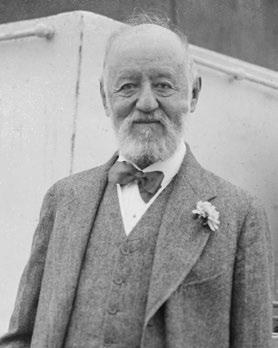
Straus immigrated from Bavaria to New York City with his family as a child in 1854. They became involved in retailing, operating the china and glassware departments at Macy’s department store in 1874. The Straus family was so successful they later became partners with Macy’s, eventually taking over control of the city’s largest department store and Abraham & Straus stores. The Straus family made many innovations to retailing and marketing, becoming among the wealthiest in New York City. Nathan Straus used much of his wealth for philanthropic causes and charity, giving most of his fortune away during his lifetime. The
NATHAN STRAUS A New York City Milk Hero
BY GARY LATTA
most significant impact on humanity was his relentless crusade for pasteurized milk.
Near the turn of the century, there was a large migration of people into urban cities like London, New York, Newark, Pittsburgh, Philadelphia, Boston, and Baltimore. Obtaining safe fresh milk became challenging. Before this, more people were living in urban areas and were closer to farms or lived on farms where fresh, safer milk was more obtainable. Milk now had to be hauled in from further distances to meet demand. In addition, the population surge created a greater demand for milk to feed babies and young children.
It is hard to imagine the deplorable conditions that existed at the turn of the 20th century. Many innercity farms were not really farms as we would envision them. They were crowded pens where cows were housed in filthy conditions and fed brewery waste called “swill” (distilleries in these expanding cities produced substantial amounts of alcohol mash that was left over from making whisky). Dairies began to locate near these distilleries, where they could purchase the cheap swill by-product to feed cows. To mask the occasional bluish color of the milk, Plaster of Paris and molasses were sometimes added, along with flour,
used as a thickener. The milk was usually distributed 36 to 48 hours later –and most often, unrefrigerated.
It is estimated that in 1891, 24% of the babies born in the New York metro area died before reaching their first birthday. Raw milk was becoming known as the “white plague” of tuberculosis, and it carried microbes analogous to scarlet fever, diphtheria, typhoid, and intestinal disorders, together recognized as “cholera infantum.”
The Straus family, like many affluent New York families, maintained their own private herd of cows to feed themselves and their children. In 1892, one of the Straus cows, which appeared to be healthy, suddenly died. Dismayed, Straus ordered an autopsy. It showed the cow’s lungs were laden with tuberculosis. A short time later, his friend, J.P. Morgan, had a similar incident with one of his cows. These, and most other small private herds at the time, despite being well-maintained and cared for succumbed to disease. Straus rationalized that disease in cows, combined with the deplorable conditions of cow pens near distilleries, were the primary cause of sickness and death, particularly among children. Straus was not a scientist, but he believed the discoveries of Louis Pasteur (who was profiled in
26 • Northeast Dairy Foods Association, Inc.
to Consider
Something
the Q4 2022 Issue of Northeast Dairy magazine) could be applied to unsanitary raw milk to make it safer. Even though pasteurization was discovered in 1865, the process had not yet been applied in the food industry.
In late 1892, Straus built his own plant on East Third Street (called the Nathan Straus Pasteurized Milk Laboratory) to sterilize bottles and pasteurize milk using heat to destroy the bacteria. In 1893, at his own expense, he opened the first distribution depot in New York City. Straus sold his pasteurized milk for mere pennies and made it available for free to those that could not afford it. As he opened more distribution depots, Straus became active and outspoken, encouraging government to get more involved. He relentlessly addressed civic groups and medical associations, and lobbied government advocating for legislation. It was not an easy task getting pasteurization accepted. Many milk distributors resisted due to the added costs.


By the turn of the century, Straus had built 18 milk stations around the city. There were stations at the East Third Street Pier, City Hall Park, Washington Street, Lenox Avenue, Cherry Street, Mott Street, East 66
Something to Consider
Street, and Columbus Circle, run by the wife of William Randolph Hearst. Straus distributed hundreds of thousands of bottled pasteurized milk each year. He built several milk dispensaries where New York’s citizens could taste a sample of pasteurized milk for a penny and discover that the process did not alter the taste. The milk stations also provided free medical examinations for children and free preventative medical advice to families.
Straus’ success soon became evident
in the numbers. Prior to his efforts, the death rate for children was 96.2 per 1,000 for those under five years of age. This figure jumped to 136.4 deaths per 1,000 in the warm summer months. At Randall’s Island, where abandoned and orphaned children were sent, the death rate was an astonishing 42%. After Straus put a pasteurization plant there in 1898, the rate immediately dropped to 28% with no changes in diet or hygiene.
In 1893, Straus developed a baby
NED Magazine | First Quarter 2023 • 27
Photograph shows Franklin D. Roosevelt and Nathan Strauss at the 1924 Democratic National Convention in New York City, which was held June 24 through July 9. (Source: Flickr Commons project, 2022). Retrieved from the Library of Congress
Nathan Strauss Pasteurised milk laboratory, Washington, DC. Retrieved from the Library of Congress.
formula using pasteurized milk with added barley and oat water, introducing the first infant milk depot. The formula was available at very low cost and was always free to those that could not afford it. By 1908, Straus was providing the infant milk formula, around 4 million bottles a year, to most of New York City’s babies. After 1910, the city began to take over much of the responsibility of operating these infant formula stations, and was operating 79 of them by 1917.
Widespread consumer and government acceptance of pasteurization did not come swiftly or easily, however. As voluntary programs established by philanthropists and charities were becoming numerous, acceptance of pasteurization by the dairy industry came slowly. Much of the industry’s resistance stemmed from the added costs of pasteurization, and many distributors blocked efforts to mandate it by law. In 1907, Straus sought to have a New York City ordinance that required milk sold to the public be pasteurized. Opposition came from numerous milk
distributors, some physicians, and, surprisingly, the city’s own health department. Much of the argument against the ordinance was that the benefits of clean raw milk outweighed the risks. The push for the ordinance failed. A second attempt to pass the ordinance failed again in 1909. Chicago had passed a similar ordinance in 1908, only to have it repealed in 1910 when the courts ruled the legislation disrupted free trade. It was not until 1911 that support for mandatory pasteurization became widespread.

But Straus did much more than push pasteurization. During the economic panic of 1893, he used his milk stations to sell food, coal, and lodging at very low prices that he subsidized. His lodging houses could shelter 64,000 people. He was well-known for giving away thousands of free turkeys around the holidays. Straus was also an advocate in getting New York to create a new post called “inspector of dairy farms,” making it among the first in the U.S. to inspect the quality of milk. Straus was appointed Park Commissioner for

New York City from 1889 to 1893. In 1898, he was appointed president of the New York City Board of Health. Straus refused the Democratic nomination for mayor in 1894.
On East Broadway and Rutgers Street, Straus Square was named after the late merchant and philanthropist within months after his death in 1931. It is one of the neighborhoods where Straus had his many milk stations. In 25 years, 297 milk stations were built in 36 U.S. cities, serving over 24 million bottles safe milk. Historians estimate the lives of 446,000 children were saved because of Nathan Straus’s efforts.

28 • Northeast Dairy Foods Association, Inc. Something to Consider
Gary Latta is a dairy product specialist consultant for the Northeast Dairy Foods Association, Inc. He has more than 30 years of experience in providing economic analysis, statistics and information to the dairy processing industry.
Photo probably shows milk depot (opened in 1894) at City Hall Park run by Nathan Straus, which sold pasteurized milk for one cent per glass. (Source: Flickr Commons project, 2009)
THANK YOU






CELEB R ATING

YEARS
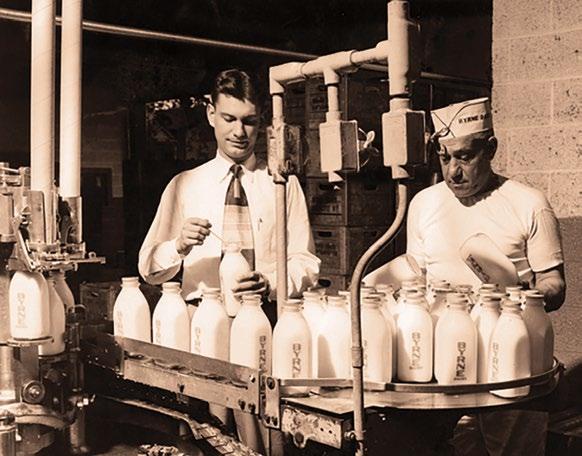

12/22/22 Revision 1 - Black
To our farmers, customers and employees, for 90 years of success. Here’s to the future!
Industry Forecast 20 23


2023 Industry Forecast



2023 Industry Forecast



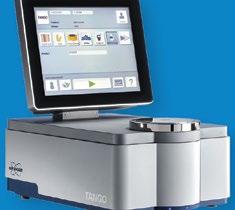




2023 Industry Forecast 1-800-826-8302 • nelsonjameson.com sales@nelsonjameson.com Cost-Effective Quality Control with FT-NIR & IR Analyzers & Spectrometers • Precise, accurate, and reliable • Easy to use in the lab or production • Ability to choose the right analyzer for your application To learn more, visit our website or contact our product specialists today! CONTINUED ON NEXT PAGE ►

2023 Industry Forecast

2023 Industry Forecast

2023 Industry Forecast







2023 Industry Forecast
PETE TURKALJ ALEX LAFOREST ANDY MULVEY TOM GIOVANNI
Beecher’s Handmade Cheese Aims to Change the Way America Eats
BY COURTNEY KLESS
During a visit to Seattle’s Pike Place Marketplace in 2002, Kurt Dammeier stumbled across an empty storefront.
Ever since he was a young boy, he has loved cheese, and he saw an opportunity staring him right in the face. Dammeier reached out to the landlord, beginning the journey he has been on for the past two decades.
“I was trying to bring artisanal cheese to Seattle,” said Dammeier, the company’s current CEO. “There wasn’t really a local cheese at the time, and I wanted to become the local favorite.”
Dammeier purchased cheesemaking equipment and began working with a local farmer, officially opening Beecher’s Handmade Cheese in November 2003 (it added a second location in New York City eight years later).
Today, it produces 15 different varieties.
“Our number one cheese is called Flagship, which is what you would call a sweet cheddar,” said Dammeier. “And then we make flavored versions of that, we make clothbound versions, and we also make a jack cheese and an American original that has multiple cultures in it.”
But Beecher’s sells more than just cheese. It has its own brand of crackers (Original, Honey Oat, Flagship Cheese) and frozen meals (mac & cheese, lasagna, roasted potatoes, street corn), and owns nine cafes in the Pacific Northwest
and at airports around the country. Each includes a cheese shop, and offers a variety of cheese forward foods, including grilled sandwiches and its famed mac & cheese.
All of its cheeses use milk that is produced locally – and they don’t contain any artificial ingredients. “We’ve had really good relationships with dairies over the years, direct relationships,” said Dammeier. “And when you’re making cheese, you can’t make it better than the milk. In the Northeast with Ooms & Sons Dairy and Dutch Hollow Farm, we’ve had great, long-term partnerships.”
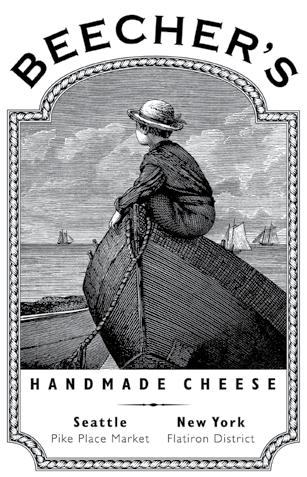
It has been a recipe for success. The company’s cheeses have been recognized multiple times at the American Cheese Society’s yearly competition, winning Best of Show in 2007, 2012 and 2022, and rating as the top clothbound cheddar in America in 2017, 2019 and 2022. “Our cheeses taste really good,” said Dammeier.
Even so, a lot has changed since the early days of the company.
“In these 20 years, people have become a lot more sophisticated about cheese,” said Dammeier. “And there are much better American cheeses than there used to be. The other thing I’ve seen is a rise in gluten-free, so we make some our frozen products in gluten-free versions.”
Through all of the company’s growth and evolution, Beecher remains true to its founding tenets: “to change the way America eats” and “to be America’s most trusted food
38 • Northeast Dairy Foods Association, Inc.
proud member Member Profile
company.” That transparency is on full display at its Seattle and New York City locations. Both feature glass-walled kitchens, where people of all ages can watch as the cheeses are created.
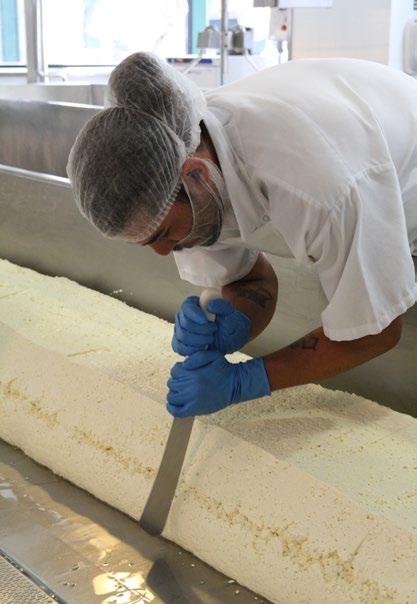

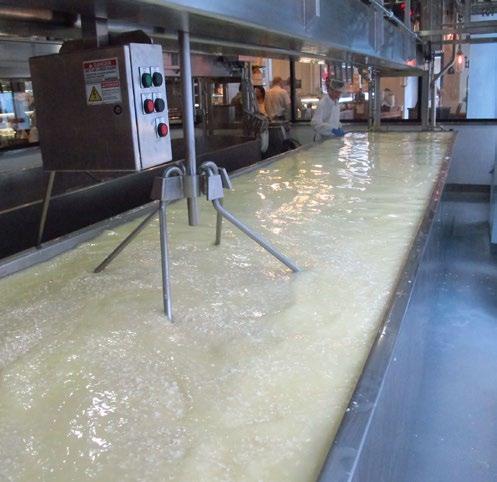

Beecher’s is also engaging the younger generation. Dammeier created the Beecher’s Foundation in 2004 to teach fourth graders about the food system. A portion of each sale (1% to be exact) is donated to it.
“We have a 2.5 hour piece of curriculum that teaches them how to be food detectives and figure out what’s really in their food,” said Dammeier. “About 200,000 kids have gone through the curriculum. We have heard back from thousands

of them that they have really changed their diet because of it…Our new goal is to get our curriculum to every fourth grader in the United States.”
Courtney Kless is the Managing Editor of Northeast Dairy Media

NED Magazine | First Quarter 2023 • 39
“We’ve had really good relationships with dairies over the years, direct relationships. And when you’re making cheese, you can’t make it better than the milk.”
– Kurt Dammeier, CEO of Beecher’s Handmade Cheese
Member Profile
At Alfa Laval, Innovation is the “Backbone of Who We Are”
 BY COURTNEY KLESS
BY COURTNEY KLESS
Alfa Laval was founded on the principles of continuous improvement and innovation. Now, 140 years later, it stands as the global leader in heat transfer, separation and fluid handling.
“We have a long history,” said John Piazza, senior vice president of the food and water division. “It started with innovation, and if you look at our company, you will find that it is still the backbone of who we are.”
Gustaf de Laval founded Alfa Laval in Sweden in 1883 (it was originally called AB Separator). That same year, the De Laval Cream Separator Co. was formed in the United States.
“He was a bit of an inventor,” said
Piazza. “The first piece of equipment was a continuous separator for cream. Since then, it’s been one innovation after another.”
Alfa Laval still manufactures highspeed separators and centrifuges for cold and hot milk applications. The company added heat exchangers to its product portfolio about 70 years ago, and it also offers fluid handling products (pumps, valves, fittings and tank equipment) for its customers in the dairy industry.
“We are always looking to contin-
uously improve upon our solutions,” said Piazza. “So, our equipment is engineered in such a way that it’s more efficient, by recovering more of our customers’ products, by using less energy, and by creating less waste. I think that’s a big differentiator for us in the marketplace.”
It is also a key part of Alfa Laval’s corporate identity.
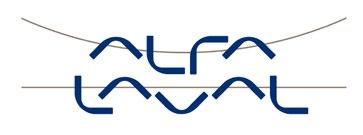
“Sustainability has become a focus of our company,” said Piazza. “We ship a lot of equipment all over the world, so there’s a significant opportunity for us to really reduce our impact on the environment, and we have a lot of initiatives in place.”
For one, Alfa Laval expects to be carbon neutral by 2030 for its own
40 • Northeast Dairy Foods Association, Inc.
proud member Member Profile
processes, and 50% reduced for the sub-suppliers that it works with. But its efforts extend beyond the company.
“Our products help enable our customers meet their own sustainability goals,” said Piazza. “That’s how we make them more efficient and more effective in their marketplace. If you look at what we do as a global organization, that’s what we’re focused on every day.”
Customer service is important to Alfa Laval.


“In the U.S., we’ve made very significant investments in that infrastructure, so that we are there when our customers need us most, said Piazza.” I think that’s a very big part of who we are, and it plays an important role in how
“There are three words we use to describe ourselves: action, interaction and satisfaction. Our mission is to celebrate the successes of our customers, our people and the planet. And we take it to heart.”
– John Piazza, senior vice president of the food and water division

our customers succeed day-to-day. When things work the way you want them to, that’s great, but there are times when maintenance is needed, whether planned or unplanned. And that’s when you need someone to answer the phone at 3 a.m. on a Saturday and guide you through getting your plant or piece of equipment operational.”
Another way the company is serving its customers is through a new food hub in Kenosha, Wisconsin. It contains a lab, where Alfa Laval can test customer products (“this really helps determine the best solution for the specific application,” said Piazza), and a training center, where it can demonstrate and educate customers, partners and employees on its latest technologies.
“Every aspect of our sales and technical function is represented there, and because of that, it allows us to collaborate and work with the entire customer solution, instead of just one product or one piece of it,” said Piazza. “We’re able to look at the entire portfolio and the entire problem and look for a solution.”
As for the future, Alfa Laval aims to continue making an impact on the marketplace – and beyond.


“There are three words we use to describe ourselves: action, interaction and satisfaction,” said Piazza. “Our mission is to celebrate the successes of our customers, our people and the planet. And we take it to heart. It’s just who we are. We have that engagement every day about taking action and actually making a difference… I think in five years we are still going to be very much a process solutions-based company, but I think we are going to go well beyond that, and really look at how we do partner with customers in such a way that we’re making the difference in how they perform their roles in the world.”
Courtney Kless is the Managing Editor of Northeast Dairy Media

NED Magazine | First Quarter 2023 • 41
Member Profile
MEMBER AND INDUSTRY NEWS
STEWART’S HOLIDAY MATCH RAISES OVER $2 MILLION FOR LOCAL CHILDREN’S CHARITIES
NORTHEAST DAIRY FOODS ASSOCIATION, INC.
VERMONT CREAMERY RECOGNIZED AT WORLD CHEESE AWARDS
Vermont Creamery was honored with six World Cheese Awards at the ceremony held in November.
Standing out amongst the 4,343 entries, were the creamery’s Classic Fresh Goat Cheese, the cheese that started the business nearly 38 years ago and is currently ranked the number one goat cheese in America, which took home Gold. Bonne Bouche, the flagship of their aged cheese collection, and Vanilla Crème Fraîche also earned Gold medals. Beloved aged cheeses, Cremont and Coupole won Silver medals, and Bijou, a fan-favorite aged goat cheese won Bronze.
“There is no denying the significance of winning at the World Cheese Awards,” said President Adeline Druart. “Having our most consumer-cherished cheeses recognized by this panel of cheese experts, on the international stage in Europe, is so gratifying, knowing that our industry peers appreciate these iconic cheeses as much as our consumers and customers do. This tells us that the U.S. artisanal cheese movement has come a long way and can stand against the world’s best.”
From Thanksgiving Day through Christmas Day, Stewart’s customers donated $1,011,281 to the program. Each individual donation was doubled penny for penny by Stewart’s Shops. With no administrative fees, 100% of the funds benefit local, nonprofit children’s organizations.
“We are continually amazed by the generosity of our customers,” said Jennifer Frame, director of corporate philanthropy. “We are proud to double their gifts allowing us to share more with our communities. These gifts have the power to accelerate progress where it’s needed most and support projects and services that can fuel real change in our communities.”
The company also debuted an online shop, where Stewart’s fans will be able to get limited-edition Stewart’s branded items, coffee and My Money/Gas Cards delivered right to their doorstep.
CHOBANI APPOINTS NEW CHIEF COMMUNICATIONS & IMPACT OFFICER
In December, Chobani appointed Nishant Roy as Chief Communications & Impact Officer. In this role, Roy will oversee corporate communications, government relations, sustainability, community impact, and philanthropy.

42 • Northeast Dairy Foods Association, Inc.
Member News
Do you have member news that we can feature in the next issue of Northeast Dairy Magazine?
Email courtneyk@nedairymedia.com.
Before taking the role of Chief Communications & Impact Officer, Roy served as Chief of Strategic Operations after serving as Chief of Staff for Hamdi Ulukaya. Prior to joining Chobani, Roy worked at the United States Agency for International Development (USAID), structuring partnerships to lift people out of abject poverty. Previously, he also worked at Goldman Sachs.
LACTALIS AMERICAN GROUP WINS SEVEN MEDALS AT THE GUILD OF FINE FOODS WORLD CHEESE AWARDS
Lactalis American Group was recognized for its cheesemaking expertise at The Guild of Fine Foods World Cheese Awards, winning a total of seven medals in the prestigious, global cheese-only event.
All seven winning Galbani brand cheeses were produced at Lactalis’ Nampa, Idaho plant, and include: Galbani 6 oz. Fresh Mozzarella Ball (Silver); Galbani 12 oz., Marinade Cup (Bronze); Galbani Whole Milk 12 oz. String Cheese (Bronze); Galbani Mascarpone (Bronze); Galbani Whole Milk Premio Shredded Cheese (Bronze); Galbani 80/10/10 Specialty Blend Shred (Bronze); and Galbani 50/50 Blend Shredded Cheese (Bronze).
“As our Galbani brand celebrates its 140th anniversary this year, it was an honor to have seven of our products recognized among the top cheeses internationally,” said Jean-Luc Bruandet, president and chief executive officer of Lactalis American Group. “It’s also a testament to our dedicated employees who are committed to producing nutritious and great-tasting cheese every day.”
AGRI-MARK OPENS NEW DISTRIBUTION CENTER
In December, Agri-Mark opened a new distribution facility in Enfield, Connecticut.
It will add 202,000 square feet of dry storage space, 60,000 square feet of refrigerated space, and 30 total dock doors for butter and non-fat dry milk powder products.
“We had vision of a modern operation, all under one roof,” said David Lynn, interim CEO. “That vision has been realized, and we are very excited at what the future holds.”
NEW MEMBERS
The following new member recently joined Northeast Dairy Foods Association, Inc., or the The Northeast Dairy Suppliers Association, Inc.
For more information about the benefits and services available from both the Northeast Dairy Suppliers Association, Inc., and the Northeast Dairy Foods Association, Inc., contact Leanne Ziemba at 315-452-MILK (6455) or lz@nedairyfoods.org.
rob@careed.com
200 Saltonstall St. Canandaigua, New York (585) 394-1243

NED Magazine | First Quarter 2023 • 43
C.A. REED ASSOCIATES,
INC.
Robert Park
Vice President
WELCOME Member News
ON NEXT PAGE ►
CONTINUED
NORTHEAST DAIRY SUPPLIERS ASSOCIATION, INC.
MARATHON ENERGY REBRANDS, CHANGES NAME
Marathon Energy, a full-service independent retail energy provider based in Woodside, New York, announced it is changing its company name to Energo and unveiled a new logo. This change is in response to its accelerated growth, and only impacts the company name and logo. There is no change in ownership and in no way impacts or changes customer accounts.
“For us, ‘Energo’ reflects our continuous forward movement – embracing innovation while evolving and pivoting on the go,” said President and CEO Jerry Drenis. “Since our beginning, nearly three decades ago, our entrepreneurial spirit and unparalleled customer service has driven us to innovate and expand. Therefore, as we prepare for the future, we want to embrace our evolution, transformation and growth with a refreshed look and feel.”
ALTIUM PACKAGING ANNOUNCES TWO ACQUISITIONS
Altium Packaging has acquired New Hampshire-based Plastic Industries and Andersen Plastics, a blow molding manufacturer located near Portland, Oregon. These acquisitions expand its offerings and increase its bottle manufacturing capabilities throughout key industries and geographies.
ATLAS AUTOMATION EXPANDS OPERATIONS
Atlas Automation located in Rochester, New York has expanded operations, opening the Special Fabrications Division just outside of Brockport, New York. The new division specializes in custom sanitary stainless steel sheet metal fabrication for commercial, residential and industrial applications. Using state-of-the-art equipment and highly skilled labor, it produces high-quality products for restaurants and food service customers and industrial food manufacturers.
ECOLAB AGAIN RECOGNIZED FOR SUSTAINABILITY LEADERSHIP
Ecolab, Inc., the global leader in water, hygiene and infection prevention solutions and services, announced it has been recognized for climate and water leadership by CDP and named to the Dow Jones Sustainability™ Indices. The distinguished recognitions further demonstrate Ecolab’s sustainability leadership.
Ecolab received leadership-level rankings from CDP, earning an A- ranking for both climate and water security. This marks the fourth consecutive year of being recognized by CDP for water security and second consecutive year for climate. It’s Ecolab’s third consecutive year on the Dow Jones Sustainability World Index and eighth consecutive year on the Dow Jones Sustainability North America Index.
“Taking action on sustainability, climate, and water not only protects our planet, but also drives profitable growth,” said Chairman and CEO Christophe Beck. “We are proud to be recognized again by CDP and the Dow Jones Sustainability Indices and look forward to continuing to show how operating sustainably accelerates growth and delivers substantive value while making the world a better place.”
FARM CREDIT EAST CARES DONATES $75,000 TO NORTHEAST CHARITABLE ORGANIZATIONS
Farm Credit East announced the Farm Credit East Cares Community Fund donated more than $75,000 to various charitable organizations throughout the Northeast. Since the program’s 2011 inception, Farm Credit East Cares has contributed more than $1 million to various Northeast charities and disaster relief efforts.
More than 80 northeast organizations received funds resulting from 2022 employee contributions. Recipients included food banks and hunger relief efforts, youth and agricultural education programs such as 4-H, community and health support organizations, and programs to enrich the agriculture community.
“Farm Credit East Cares continues to make a meaningful impact in our local communities,” said Craig Pollock, Farm Credit East senior vice president and Farm Credit East Cares coordinator. “Initiated by our employees, I’m humbled each year by our team’s generosity to support important causes that make a difference in both rural and urban communities.”
44 • Northeast Dairy Foods Association, Inc.
Member News
WESTROCK NAMED TO DOW JONES SUSTAINABILITY INDEX FOR NORTH AMERICA FOR THIRD CONSECUTIVE YEAR
WestRock, a leading provider of sustainable paper and packaging solutions, announced it has been named to the Dow Jones Sustainability North America Index (DSJI North America) for the third consecutive year, in recognition of its commitment to sustainable business practices.
The Index was launched in 1999 as the pioneering standard for measuring and advancing corporate, environmental, social and governance (ESG) practices across all industries. DJSI North America recognizes the top 20 percent of sustainability performance among the 600 largest U.S. and Canadian companies.
ALFA LAVAL OPENS NEW FOOD HUB
Alfa Laval announced the opening of a new food hub in Kenosha Wisconsin. Conveniently located within close proximity to Chicago and Milwaukee International Airports, the hub is equipped with enhanced capabilities to support the U.S. hygienic & food processing market.
Base to more than 100 associates, the facility boasts several enhancements including a state-of-the-art laboratory, testing center, and service repair capabilities, along with plentiful training space for customers and partners to engage with subject matter experts on a wide variety of topics from product sizing and maintenance to system application and design. The campus primarily serves the hygienic process industry, which includes dairy, food, beverage, brewing, personal care, pharmaceutical, fats and oils and protein processing, along with many others.
“I am extremely excited about the expanded capabilities offered at our newly remodeled food hub in Kenosha,” said John Piazza, senior vice president of the food and water division. “It is a true center of excellence where customers and channel partners can access our full breadth of hygienic separation, process systems, heat transfer and fluid handling expertise.”
HYDRITE NAMED EXCLUSIVE DISTRIBUTOR FOR PURE BIOSCIENCE


Hydrite has entered into a multi-year agreement with PURE Bioscience, Inc. to be the exclusive distributor of PURE® Hard Surface disinfectant in the dairy and plantbased protein processing market.
PURE Bioscience is a producer of proprietary antimicrobial products containing Silver Dihydrogen Citrate (SDC), a liquid ready-to-use antimicrobial agent. PURE® Hard Surface is an SDC-based, EPA-registered food contact surface sanitizer and disinfectant formulated to rapidly eliminate food borne pathogens.
“Hydrite is a leader in chemical distribution, and we look forward to working with them as our exclusive distributor in addressing efficacious solutions in the dairy, beverage and food safety segments,” said Tom Myers, PURE Bioscience chief operating officer.
ANDERSON-NEGELE COMPLETES ACQUISITION OF GEA DIESSEL MAGNETIC FLOW METERS COMPONENT BUSINESS
Anderson-Negele has completed the acquisition of the Metering Blending, and Calibration (MBC) Division component business from GEA Diessel, GmbH (“GEA Diessel”), a leading provider of magnetic flow meters for hygienic applications.
“We are excited to integrate magnetic flow meters more closely into our portfolio of hygienic sensors, meters, and instrumentation,” said Cathy Clausen, president of AndersonNegele. “Now we can begin the next phase of innovation for these products to address our customers’ newest process efficiency and sustainability challenges.”
IN MEMORIAM
THOMAS EASTHAM
The Northeast Dairy Foods Association and Northeast Dairy Suppliers Association extend our condolences to the friends and family of Thomas Eastham, who passed away on Nov. 16, 2022. Thomas was the Director of Operations at Great Lakes Cheese.

NED Magazine | First Quarter 2023 • 45
Member News
NEW PRODUCTS
USDA DAIRY CERTIFIED AIRLOCK FOR HYGIENIC APPLICATIONS, SCHENCK PROCESS

The newly released Global Hygienic Blow-Through Airlock (GHB) is a USDA Dairy Certified dismountable airlock that is ideal for applications where dry raw or finished products are being handled in the process and where inspection or system clean-out are required. Because the GHB is designed for high process rates it possesses a number of features suited for processes that have a higher sanitary requirement.
The GHB is a dismountable round inlet, blow through, convey line outlet rotary valve, which incorporates seals and product contact surfaces that meet food safety requirements. Endplates and rotor can be disassembled and removed from the valve housing for cleaning. The endplates have specifically been designed for access to the seal area for cleaning or seal replacement. Rotor removal and reassembly is completed with a few simple steps in minutes.

Each GHB is equipped with a wide range of features that include a design for NFPA 69 blocking valve requirement, 32 Ra surface finish on all wetted and primary food contact surfaces and a casting exterior surface that is free of all pits and porosity providing an easy to wipe and wash-down valve exterior.
CHEDDAR FOR BETTER, CABOT CREAMERY
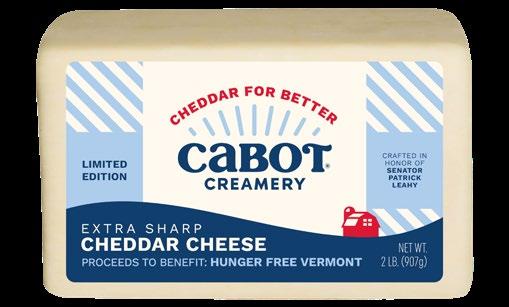
Cabot Creamery Co-operative launched its inaugural Cheddar For Better campaign with the sale of a limited-release cheddar in honor of U.S. Senator Patrick J. Leahy. Proceeds from the sale will benefit Hunger Free Vermont, an essential statewide nonprofit that aligns with Cabot’s commitment to nourish communities, foster cooperative relationships, and steward the land.
The limited-release two-pound cheddar bar retails for $13.99 and can only be purchased online at CabotCreamery.com or at the Cabot Farmers’ Store located at 2657 Waterbury-Stowe Road, Waterbury Center, Vermont. The Cheddar For Better program will be an ongoing initiative, with each new offering benefitting a different nonprofit organization.
“We believe businesses can be a force for good, and in celebration of our tenth anniversary as a certified B Corp we are excited to launch Cheddar For Better, a program that embodies the wholesome goodness of our cheddar,” said Dave Lynn, Cabot’s interim CEO. “As a farmer-owned cooperative, feeding people is at the core of what we do and why we exist. It is very fitting that Hunger Free Vermont is the first nonprofit to benefit from our inaugural Cheddar For Better release.”
46 • Northeast Dairy Foods Association, Inc.
Do you have a new product that we can feature in the next issue of Northeast Dairy Magazine? Email courtneyk@nedairymedia.com.
Member News




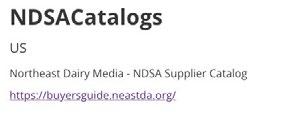
If you’d like to feature your company catalog in the next Northeast Dairy Connection newsletter contact Lesli Mitchell: lmitchell@nedairymedia.com. The NED Supplier Catalog Library issuu.com/ndsacatalogs SEE THE LATEST INDUSTRY PRODUCTS AND OFFERINGS Ranging From: Flooring • Sustainable Packaging Solutions Financial Management • PPE And Safety Equipment Trucks And Trailers • Bulk Materials Handling • and More NDSA CATALOGS ACCESS NOW
Flexible Labor Program: Challenging Traditional Norms in Manufacturing
How our manufacturing plants are meeting the workforce at their availability to overcome labor shortages
BY MICHELLE NGO, LAND O’ LAKES
“I applied immediately because I knew I didn’t want to miss out on this type of opportunity,” Cypress said. “I am a single mom, so being able to make my own hours was perfect for my family.”
“I applied right away too,” John said. “I knew this would help me make sure I could help my son during a big transition in his life.”
Although neither of them had manufacturing experience, they each got a flexible job.
Cypress Evans and John Trotter are each parents.
Cypress has a three-yearold son who is about to enter pre-school. John has a 12-year-old son who is making the move from elementary school to middle school. Like many parents, Cypress and John knew they didn’t want to miss key milestones in their son’s lives, but they
worried about traditional work schedules getting in the way. That’s when they both found a listing at the Land O’Lakes Plant in St. Joseph, Missouri that sounded too good to be true.
“Part-time shifts on your schedule, not just ours,” it read. The job description for the “flexible part-time operator” also said there was no experience required.

Cypress and John are far from alone in wanting a job with a better work-life balance. In a recent McKinsey survey, 64% of those with children said the demands of childcare made it hard for them to effectively perform their work, and 33% cited taking care of family as a reason they wanted to work part-time. Women were 2.3 times more likely than men to express that desire. But it’s not just working parents. In a survey by Prudential, one-third of workers who switched jobs during the pandemic took less pay in exchange for better work-life balance.
In early 2022, St. Joseph’s plant became the first Land O’Lakes manufacturing facility to offer a program that would allow full-time and part-time workers to choose their own hours. Director of Manufacturing Brandon Calvert helped develop the prototype
48 • Northeast Dairy Foods Association, Inc. Business Trends
as millions of working parents left the workforce during the pandemic due to schools transitioning to distance learning, among other disruptions. Brandon says because of this, manufacturing facilities across Land O’Lakes were left with a number of job openings which in turn left current employees working more overtime than desired. “They really hung in there and we are so grateful for their hard work,” Brandon said. “But the employees at the St. Joseph site have been very candid with us. They started to ask for more help, and we quickly came up with a plan to implement a flexible labor program to meet the workforce at their availability.”
Part-time flex positions began rolling out in late February. Brandon says the response was overwhelming, with more than 100 applicants in the first few days. Cypress was one of the first employees hired under the program and began working the production line in March. Her schedule is 7 a.m. to 12:30 p.m. She says the flexible hours have made a huge difference in her life.
“Now I can get my son ready in the morning, drop him off at my mom’s house who will take him to preschool, and then I can pick him up at 1 p.m. every day,” Cypress said. “I now have the opportunity to see his big milestones at school, take him to doctor’s appointments, his first t-ball practices. I won’t miss anything like that. And that means a lot to me.”
Meanwhile, John started part-time at the end of April but chose to transition to a full-time position on the formulation team in mid-July. He works from 6 a.m. to 2 p.m.
“All kids get worried when they switch schools, so I wanted to make sure I was able to pick my son up from the bus stop during summer school
and take him to his friend’s house,” John said. “Now that he’s adjusted, I took the opportunity to work full-time, since Land O’Lakes is a great company to work for, with great benefits.”
It’s not just working parents taking advantage of the program benefits at St Joseph. College students, workers needing extra money with a second job, and retirees wanting a part-time gig to keep them busy are all part of the team at the St. Joseph site.
“We’ve learned a lot from the program already,” Brandon said. “We’re seeing high-caliber employees. Job experience isn’t required but many applicants have it anyway and are showing up to work because they want to be here and they’re able to show up because they made that schedule for themselves.”
Brandon says his team is working towards the goal of rolling out the flex labor hours program to many nonunion facilities across Land O’Lakes, and have added 6-10 additional sites so far.
Michelle Ngo is a communications specialist for Land O’Lakes, Inc., a member of the Northeast Dairy Foods Association, Inc. This article originally appeared on the company’s blog.


NED Magazine | First Quarter 2023 • 49 Business Trends
Finding Opportunities in Your Ag Retail Businesses Amidst Inflation
BY CHRIS LAUGHTON, FARM CREDIT EAST
Within challenge lies opportunity. We saw this as the COVID-19 pandemic struck – while so many businesses and restaurants were forced to close, ag retail saw a resurgence of consumer interest. In the current inflationary environment, prices continue to rise at a rate we haven’t seen since the early 1980s and ag retail businesses are once again faced with a challenging predicament. However, there may once again be opportunity for these customer-facing businesses. Read Farm Credit East business consultants top tips for managing your ag retail businesses in this inflationary environment.
CHECK YOUR PRICES.
Customers expect price increases now, so seize the opportunity. Reset your prices to enhance your margins where possible. It’s important to raise prices upfront so you don’t have to make greater price jumps later.
On the same accord, consider how you are creating value with your offerings. Be sure to still offer deals and value to customers who may be experiencing inflation shocks themselves. This might mean getting creative!
KNOW YOUR COSTS – AND YOUR NUMBERS!
Strive to maintain adequate working capital. Look at the true inflation of your own costs. It’s likely not everything is increasing at the same rate. Your variable costs will typically rise faster than your fixed costs.
ENGAGE YOUR CUSTOMERS.
Aim to keep customers engaged and maintain relationships. Know who your primary and most profitable customers are. Think about where they may be sensitive to price increases. Your customers will be more understanding if you are increasing prices alongside and proportional to other increases in the economy.
LEVERAGE YOUR TOOLS.
Use the tools that you’ve invested in. Leverage your point-of-sale (POS) system to manage your inventory and customers. The management reporting features of POS systems can generate reams of data, but it’s only valuable if you can use it.
MANAGE INVENTORY.

Managing inventory in a time of shortages can be challenging, so prioritize inventory accordingly. Determine
“must-haves.” At the same time, don’t be afraid to sell out sometimes, especially with items that are perishable or seasonal.
MAINTAIN OPTIMISM.
Manage from a place of abundance rather than scarcity! Realize there are always challenges, but there is opportunity as well. Build on your business’s strengths, and remember to feel excitement, positivity and possibility, rather than dwelling on limitations, setbacks, and hardships.
THE TAKEAWAY?
Inflationary periods have historically not lasted long, and the fed is acting aggressively, so take the opportunity to adjust your pricing now. This can be a chance to push towards new clients and new business. Look at other businesses to see what they are doing – both your peers, and perhaps others outside your sector – and get creative!
Chris Laughton is the director of Knowledge Exchange at Farm Credit East, a member of the Northeast Dairy Suppliers Association, Inc. This article originally appeared on the cooperative’s Today’s Harvest Blog.
50 • Northeast Dairy Foods Association, Inc. Business Trends
Reaching the Gen Z Audience to Help Fill Positions
BY BRIAN BLUFF
The Great Resignation. Effects of COVID. The new work-from-home mentality.
No matter what you call it or where you place blame, it’s evident there’s still a national hiring crisis at hand, with no signs of slowing.
Unfortunately for the farming and agriculture community, this industry also has hiring challenges. Currently, there are over 300 million people in the U.S. that need to put food on their tables. Over the next 35 years, the world’s population will increase to nearly 9.6 billion, making the need for agriculture and employees in this industry more significant than ever.
From agriculture technicians to farm managers, many jobs exist (and need to be filled) across any agricultural operation - large or small.
Agriculture companies must find ways to hire more skilled employees.
REACHING THE GEN Z AUDIENCE

For filling open positions, it’s best to lean on branding and marketing to help HR get the job done. And for tech positions, in particular, it’s important to understand and tap into Gen Z.
This generation, sometimes called Zoomers, is very different than previous age groups. They’re entering the workforce in droves and are consid-
NED Magazine | First Quarter 2023 • 51 Human Resources
jobs.
ered “Digital Natives,” meaning they don’t know of a time without technology, smartphones, or social media.
Research has shown that they are much more diverse than their generational counterparts. They are passionate about working for companies that care, aren’t afraid to change jobs, and want flexibility in both their personal and professional lives.
They’re also highly connected and use social media to consume all forms of content – from communication with friends, to reading the news, to following brands they love.
If leadership feels that Gen Z is the primary audience to target when filling technician roles – it’s best to meet this group where they are. That’s going to be through the type of content and which content channels appeal most to them.
VIDEO & AUDIO CONTENT
You won’t likely find this age group present on the same type of platforms as your buyers.
Certainly, your sales and marketing teams have long put heavy emphasis on channels like Google Search, Facebook Ads, and LinkedIn Sales Navigator. But embracing Gen Z from a recruitment standpoint requires time and attention on other platforms.
YouTube is the #1 Gen Z platform, used by 88% of Gen Zers, a little over 10% more than any other platform. YouTube is then followed by Instagram, with 76% of Gen Zers that use the platform. Probably to no surprise, TikTok at 68% and Snapchat at
67% round out the top platforms where Gen Zers are most engaged. Brands should understand the nuances of these platforms, learn how to create fun, engaging reels and other video-based content, and find ways to connect and interact with potential candidates.
Gen Z is considered to be music-obsessed, too. Beyond video, think about audio content.
Agricultural companies can record regular podcasts about the company and its jobs – and stream/publish them on sites like YouTube and Spotify. This helps brand the company and get in front of these coveted potential employees.
REVIEWS
Consumer Reports who?
Peer-to-peer reviews are all Gen Z has ever known. Make sure that happy employees are writing positive reviews on job board sites.
Before applying, candidates will check these out to read what past or current employees have to say about the company and its culture.
ADVERTISING
It’s important that you not only create organic (free) content, but lean on paid options, too.
In doing so, you can get your brand’s content and its messages in front of the right people.
In this case, you’ll use each of the platform’s strong targeting abilities to zero in on Gen Z users who might be interested in working for you.
I might run a campaign that includes targeting like this:
• Channel: YouTube
• Goal: Views
• Campaign: Technicians
• Targeting: Male, 18-24-year-old, lives in Wisconsin, interested in John Deere and hunting
• Creative/messaging: Let’s get dirty at work
EMPLOYEE ADVOCACY
It’s true that personal content travels much further than company content. Because of this, it’s important you consider an employee advocacy program.
An employee advocacy program allows and encourages your employees to post content about the company on their personal channels. Doing so helps generate more buzz about the brand.
Of course, it’s easier for outward-facing folks like sales, marketing, and customer service. But it shouldn’t be limited to just these white-collar roles.
If your goal is to utilize employees to help with recruitment – those in the trenches could and should be posting, too!
Create a policy (and maybe offer incentives) that gives your folks in the barn, in the fields, and under the hood, permission to talk about the company in their daily jobs, what they love about the company, and the benefits of working in this industry.
GRASSROOTS EFFORTS
Finally, don’t neglect “offline” tactics.
Though they aren’t as trackable and sometimes more costly, they can make a big difference in reaching young candidates and having an impact. Plus, they’ll give you more content to share on your social channels!
52 • Northeast Dairy Foods Association, Inc. Human Resources
It’s important to be competitive and allow folks (especially Gen Z) to know they don’t have to sacrifice quality of life when pursuing blue-collar
Consider opportunities like this:
• Job shadow programs with the local high school

• Local job fairs
• A “volunteer day” at a local non-profit
• Your service manager filling in as a guest lecturer at the local community college
Don’t forget to sponsor events or scholarships at your local trade schools, too, which directly impact the career pursuit of select students.
IDENTIFY YOUR PERKS & MESSAGING
Now that you’ve decided on WHERE to interact, you need to decide on WHAT to say.
It’s important that those on the HR team fully understand the role(s) they are trying to fill.
Agriculture jobs can be tiring, labor-intensive, and dirty. Some require you to clean equipment, diagnose issues, replace parts, make repairs, keep up with manufacturer specs and safety standards, fix electrical systems, and perform scheduled maintenance.
From a promotion standpoint, it’s necessary that HR and marketing lean into what makes these types of posi-
tions – and your company – unique and appealing. Consider the reasons why someone would want to work for you.
Pay and Benefits: It’s important to be competitive and allow folks (especially Gen Z) to know they don’t have to sacrifice quality of life when pursuing blue-collar jobs.
Education & Cost-Savings: Ag positions don’t always require any advanced college degrees. Some companies require/recommend certifications, technical school, or trade programs. Focus on the cost savings that come from attending a two-year or trade school compared to a traditional four-year college, and emphasize the ability to begin your life debt-free. And consider offering an internship or apprentice program to make an early investment in someone’s future.
On-the-Job Training: If there are ways to go from novice to skilled professional quickly – that’s a significant selling point. Doing so will help candidates feel confident in applying –even if they don’t have the necessary skills just yet – and also reassure them that there are ways to grow with added skills, responsibilities, and promotions throughout their careers.
Company Culture: What makes your company different than others? Do you support the local community? Is it a family-like environment? What’s the average tenure of your staff? Produce content and highlight what makes your brand great.
The HR team (and the company as a whole) should remember to keep retention a top priority too. It’s a lot easier and less costly to keep great employees rather than invest in the recruitment and training of new ones. Plus, it will help avoid other companies from poaching your employees and putting you in an even worse hiring bind. Make sure your current team feels the love with perks and benefits, continuing education opportunities, and fair compensation.
SUMMARY
Branding and digital marketing are long-term plays.
It’s the collection of all the micro-moments that prospects (or, in this case, potential employees) have with your company and what they ultimately think of you.

Branding and digital marketing can play an influential role in helping with recruitment efforts and filling your most desperate-to-fill positions.
Embrace the proper channels, incorporate the right promotional messages, show off your brand, and speak to the needs/wants of the Gen Z audience.
It will help fill vacancies, avoid costly downtime, and have a long-term impact on the bottom line.
Brian Bluff is the CEO and co-founder of Site-Seeker. You can contact him by e-mail at brianbluff@ site-seeker.com

NED Magazine | First Quarter 2023 • 53 Human Resources
Group Health Insurance Can Help Hire and Retain Good Employees
BY AGRI-SERVICES AGENCY
Despite the best efforts of the Federal Reserve – through their rate raising campaign – labor markets continue to be a challenge; employers know how difficult it can be to hire and keep employees. In some cases, employers are still offering signing bonuses, extra vacation, and other incentives to join or stay with their company. One option that can help you hire and retain employees is offering health insurance to your team. Offering health insurance can provide multiple benefits. It can improve your reputation as a high-quality employer and help you:
• Attract good employees: It’s still difficult to attract and keep good employees right now. Employees continue to report that healthcare is a key factor when deciding to choose or stay with an employer.
• Maintain a stable and motivated workforce: When offering health insurance, you are investing in your employees. You’re showing them that you have their best interests in mind and value their job performance.
This can help you to build a tight knit team that will stay for years.
• Improve productivity: When they are covered, employees are more likely to go for preventive services or see a doctor when sick. Health insurance coverage allows your employees to be healthier, return to work quicker, and stay on the job. Keeping employees on the job improves the productivity of your workforce. Another option available through many plans is telemedicine. This is a great option for minor issues that can be handled quickly over an internet connection, and it’s another feature that can get employees back to work faster.
• Improve morale: Health insurance benefits can increase morale throughout your staff and generate a positive culture. When employees feel valued, they are more likely to have a good attitude and be more positive at work.
• Tax benefits: There is also a potential tax benefit to offering health insurance; you may be able to deduct
54 • Northeast Dairy Foods Association, Inc. Human Resources
your health plan contributions. This is not always the case, and we recommend that you speak with a financial or legal advisor before taking advantage of this possible tax benefit.
Another piece of an overall health plan you can consider implementing is a wellness program. First, let’s answer the question, what is a wellness program? Healthcare.gov defines a wellness program as a program intended to improve and promote health and fitness, usually offered through the workplace, sometimes offered directly through insurance companies. These programs usually offer incentives to quit smoking, effectively manage diabetes, maintain a healthy weight, participate in preventative health screenings, and more. The goal is to minimize injury and illness, while maintaining the health of your workforce through the use of education, support teams, communication, and technology. Companies that have a wellness program have reported a reduction in absenteeism, improved productivity, and lower levels of stress throughout their workforce. A program like this can be a great way to offer an additional benefit that will be good for both employees and employers.
Health insurance is a complex subject; you shouldn’t have to be a benefits expert. With that in mind, you should find a partner you can work with to help you design a group healthcare plan that meets your needs and fits your budget. When your plan is complete and implemented, it should help you attract and retain employees as well as improve the productivity of your team. Some additional options, beyond your group health insurance and a wellness program, that can help improve your plan include: life insurance, dental coverage, vision insurance, and other voluntary or employer paid options.
Setting up a plan combining various components of health insurance and a wellness program is a great way to show your employees that you have their best interests in mind. Combining elements of these programs will amplify the benefit to your company and your team.
For over 50 years, Agri-Services Agency (a member of the Northeast Dairy Suppliers Association, Inc.) has proudly served the agricultural community, offering a variety of competitively priced, high-quality insurance programs – including workers’ compensation coverage, health insurance, and property/liability insurance – designed to give agribusiness owners a competitive edge. ASA is the nation’s first and only cooperative-driven insurance agency supported by the mission and values of the customers we serve.
MARCH 2023

NATIONAL NUTRITION MONTH, NATIONAL AGRICULTURE MONTH
MARCH 17: St. Patrick’s Day
MARCH 22: National/World Agriculture Day
MARCH 23: National Chip and Dip Day
APRIL 2023
APRIL 3: National Chocolate Mousse Day
APRIL 11: National Cheese Fondue Day
APRIL 12: National Grilled Cheese
Sandwich Day
APRIL 17: National Cheese Ball Day
APRIL 23: National Cherry Cheesecake Day
MAY 2023
MAY 3: National Chocolate Custard Day
MAY 18: National Cheese Souffle Day
MAY 22: National Vanilla Pudding Day
MAY 26: National Blueberry Cheesecake Day
JUNE 2023
NATIONAL DAIRY MONTH
JUNE 1: World Milk Day
JUNE 4: National Cheese Day

JUNE 7: National Chocolate Ice Cream Day
JUNE 20: National Ice Cream Soda Day
JUNE 20: National Vanilla Milkshake Day
JUNE 26: National Chocolate Pudding Day
JUNE 27: National Ice Cream Cake Day
(Source: https://nationaltoday.com/april-holidays/)
NED Magazine | First Quarter 2023 • 55 Human Resources
2023 CALENDAR OF DAIRY EVENTS LET’S CELEBRATE!
Top 5 Ways to Leverage Your Website and Customer Data
BY BRIAN BLUFF
Name a keyword – any keyword – related to data. And I can almost guarantee that it’s grown in popularity and search volume over the past five years.
“Customer data”
“Lead intelligence”
“Website data”
“Consumer insight”
“Sales intelligence”
That’s because businesses are getting better at understanding how to gather, log, store and use data to help maximize sales and marketing efforts and close more deals.
But how exactly can customers use this type of data? And where can they get it?
Let’s dig in.
BUILDING A PLAN
Before you decide on what type of data you need and where it will be sourced, you should start with a plan. In doing so, you’ll be able to align your team, control your costs, and, most importantly, identify what you’re trying to accomplish (and increase the likelihood of doing so!)
Here are a few tips when building your plan:
Write out your objectives and make them crystal clear. These should meet SMART criteria (specific, measurable, attainable, relevant, time-bound). Ask questions to yourself when you write them. “Will the data help us improve our product offering or pricing? Will it be used to optimize our website and improve conversion rates? Will it help build our sales pipeline?”
The plan should include the same details as any other marketing or sales plan. Things like a timeline, which team members are responsible for what, and your overall budget.
Make sure you have a team in place that understands data sourcing and management and can execute a program that uses the data. The worst investment you can make is buying into
data and having it sit on your server without putting it to work.
Once your plan is built and your budget approved, it’s time to roll up your sleeves and get your hands dirty.
5 PLACES TO GATHER CUSTOMER INSIGHT (AND WHAT TO DO WITH THAT DATA)
Now that you’ve addressed the “why,” you’ll then focus on the “how.”
Your tactics bring your plan and program to life and help ensure you’re maximizing the investment.
Here are five important customer data sources and some ideas of what you can do with the data.
SOCIAL MEDIA
Where it comes from
Let’s start with the most basic: social media. One of the least talked about perks of social media is the free data that it offers businesses and brands. If you’ve been active on social media over the years and have a decent following – you’re sitting on some good intel.
Platforms like Facebook (via Facebook Audience Insights) and LinkedIn (via LinkedIn Analytics) provide free data that gives you a breakdown of your fans and followers and reveals details about them.
What to do with it
Download the data and make sense of it (i.e., turn those huge Facebook spreadsheets into easy-to-read visual charts). Your social media fan base is typically your most loyal buyers. This is prime picking to understand the makeup of your customers.
You’ll want to lean on this data when building your buyer personas or ideal customer profiles. Look at the demographics, locations, interests, and other psychographics. This information can also help you prepare the best audience sets when building out ad campaigns.
56 • Northeast Dairy Foods Association, Inc.
Sales + Marketing
CUSTOMER RELATIONSHIP MANAGEMENT (CRM)
Where it comes from
Are you still managing customer data inside of an Excel spreadsheet? Yikes! Your customer relationship management (CRM) tool is your internal database that contains past, current, and future customers, details about them, as well as your interactions with them. If you’re just starting out, you’ll want to import old email lists, contact info from past buyers, scans from event apps, and more. It should be complete and comprehensive.
Additionally, you’ll want to continually bring new names into the system. Make sure any and all lead generation or intake forms port directly into your CRM. This could include your live chat software or your web forms. Finally, if you’re using lead intelligence or sales intelligence tools (see below), make sure they are integrated into your CRM so they pass that data directly over. Always make sure you’re using tags properly and segmenting your lists so you can keep your data clean, neat, and organized.
What to do with it
Your CRM should be your source of truth that contains all your customer data and, ideally, has sales and marketing functionality that allows you to take action on that data. Examples of CRMs with automation capabilities include Hubspot and ActiveCampaign.

Having a rich sortable database can help you better understand the makeup of your customers through the use of reports and dashboards. You can forecast sales results based on the pipeline, identify where there are snags in the buying cycle based on lifecycle stages, and carry out important sales and marketing activities like automated emails and SMS campaigns, sales task management, and meeting and call recording. Campaigns and workflows should be put in place for both marketing and sales teams to drive efficiency across departments, provide transparency around results, and ultimately foster better collaboration between the two.
WEBSITE DATA Where it comes from
There are a few different kinds of website data. We’ll focus on two. First, analytics software like Google Analytics and Google Search Console can provide anonymous page-related data. You can gain insight into what sources and keywords drove the most traffic, what the popular entrance and exit pages are, what users’ paths are on the site, and what conversions they clicked on most.
Second, there’s heatmapping software that can also be quite valuable. Heatmapping tools (like Hotjar or CrazyEgg) can monitor users’ behavior on your site, how they scroll, how they scan and read text, what buttons they click on most, and where they spend the most time on each page. It gives you extra intelligence – if layered on top of Google Analytics data.
What to do with it
You should always be focused on the customer experience. In today’s digital world, that experience often starts online (and, in many cases, is important throughout the entire customer lifecycle). How does a user find you? What’s their first impression when they land on the site? How easy is it to find information? To contact you? To re-connect with you?
By combining Google Analytics and heatmapping software, you can bolster your marketing measurement efforts. It can help you with keyword research and search engine optimization (SEO). It can help you improve your landing page experience, which improves advertising conversion rates and drives down cost per click (CPC). It can help you modify your website to build or eliminate pages, PDFs or panels, and streamline navigation. All in all, website data enables you to improve the experience among buyers and helps drive more sales.
LEAD INTELLIGENCE Where it comes from
Lead intelligence is a newer form of data. There are a number of tools out there – some better than others. They use reverse IP lookup to identify businesses on your website and provide an added layer of intelligence around what those folks are doing. Lead Forensics is the one we recommend.
Perhaps you’re thinking, doesn’t Google Analytics do the same thing? It does – but the problem is – Google is always
NED Magazine | First Quarter 2023 • 57 Sales + Marketing
anonymous data. With a lead intelligence tool, you can see the actual business who visited, what industry they belong to, their location, how large the company is, what source drove them to the website, what pages they spent time on, and for how long. They also provide contact information for those businesses.
What to do with it
The beauty of lead intelligence is that you know the identified business is interested and/or familiar with your company. Or else they wouldn’t be on your site. They are likely not at the purchase stage yet (or else they would have directly reached out to you), but, likely, they are at least in the research or consideration stages. And that’s huge. Take a closer look at company fit, the pages they viewed, and the content they digested, and decide how you’d like to approach them.
You have a few options: you can call, send an email, connect or engage on social media, send a direct mail piece, or enter them into a list to be advertised to later (i.e., remarketing helps stay top of mind and/or helps draw those users back to the site). Typically, lead intelligence users embrace at least one outreach method and help increase the number of prospects on their call or email lists. It can also help shorten the buying cycle.
SALES INTELLIGENCE Where it comes from
Sales intelligence is similar to that of lead intelligence with one major distinction –- it is customer data among folks that have indirectly expressed interest in your product rather than directly. Let me explain it this way: lead intelligence looks at visitors on your website, so they’ve directly shown that they are interested in what you are selling. Sales intelligence looks at external buying signals to indicate how interested and ready they might be in your industry, product, or service. It’s sourced from content they’ve consumed online, ads shown to them, events they’ve participated in, and many other online resources. It’s sometimes called “intent” data.
Beyond intent data, sales intelligence also features rich, accurate contact information for folks that you might want to reach out to based on your ideal customer profile. They feature HUGE databases of business information and contact details. This could include location, title, company size, industry, tenure, and more. Two of the larger sales intelligence platforms are ZoomInfo and Cognism.
What to do with it

Like lead intelligence, you have the same outreach option when looking at your sales intelligence data. Perhaps you might want to connect on LinkedIn to get a conversation going? Maybe a soft email featuring a personalized Vidyard video will spur a response? Maybe a friendly – but direct –phone call is deserved? Sales intelligence can help give you a peek at potential buyers and tee you up for a timely touch.
Many tools also have data enrichment capabilities. This means that, if connected to your CRM, they can reference their billions of bits of contact info, and keep your CRM’s database complete, full, and always up-to-date. Finally, sales triggers help warn you of potential needs that these buyers may have. By referencing important online news – like an acquisition, a round of new hires, or a new product launch –you can help better time your outreach. CRM data, lead intelligence, and sales intelligence lists can also be uploaded as custom audience lists into advertising platforms for improved remarketing efforts too.
SUMMARY
If your distributorship isn’t leveraging customer data yet, it’s time to get moving!
The massive explosion of data software and its ability to source, store and act upon customer data has opened up a new world of opportunity for savvy sales and marketing folks.
To avoid getting overwhelmed (or misusing the data), it’s important to always start with a plan. Outline what you’d like to accomplish with the data, identify where you’ll need to go to get it, and how you’ll ultimately use it.
Make sure sales and marketing teams are aligned, so they use the data to support each other and the company. If used right, data can help you find and talk to more potential buyers and help close more deals.
Lastly, always make sure to respect CAN-SPAM, CCPA, GDPR, and any other laws that apply to your data and your business.
That’s all for now. Happy Data Diving!
Brian Bluff is the CEO and co-founder of Site-Seeker. You can contact him by e-mail at brianbluff@site-seeker.com

58 • Northeast Dairy Foods Association, Inc. Sales + Marketing
You can now order additional print copies of the buyers guide and directory online.



ORDER NOW
To view the digital version click here
Stay connected, click the icons below to follow NDFA.


















































































Dairy
IN PRINT
GET THE Northeast
Buyers guide
DIRECTORY & BUYERS GUIDE
2023
for the Dairy Industry TRENDS Search Engine


Part of developing a comprehensive digital marketing campaign is understanding how customers and potential customers are using the Internet to find your products and your website. The graphs and information below all come from Google Trends, which analyzes the popularity of search queries in Google Search across various regions and languages. The graphs scale “Interest Over Time” which represent search interest relative to the highest point in the chart for the given region and time-period. So, a value of 100 is the peak popularity for the term.

Another alternative is Google Keyword Planner. To use this tool, you must have a Google Ads account. The Keyword
FOOD INFLATION
Planner lets you search keywords and suggests other words or phrases related to your products and services. It lets you research the trend information for how often certain words are searched and how those searches have changed over time and also gives you suggested bid estimates for each keyword so you can determine your advertising budget.
In today’s digital environment, we strongly encourage members to capitalize on this growing trend and ensure that your company is visible in the place where people search the most.

RELATED SEARCH QUERIES 1. Food prices inflation 2. Food prices 3. Food cost 4. Rate of inflation 5. What is inflation Average Search Volume has increased 128% YoY Average Search Volume has increased 246.2% over the past five years 60 • Northeast Dairy Foods Association, Inc.
Sales + Marketing
LABOR SHORTAGE
Average Search Volume has decreased 52.6% YoY
Average Search Volume has increased 81.8% over the past five years

SUPPLY CHAIN
Average Search Volume has decreased 18.5% YoY
Average Search Volume has increased 17.1% over the past five years
DAIRY
Average Search Volume has increased 1.7% YoY


Average Search Volume has increased 15.2% over the past five years
RELATED SEARCH QUERIES
1. Labor shortage 2022
2. Labor shortage definition
3. Why is there a labor shortage in U.S.
4. Why is there a labor shortage 2022
5. What is a labor shortage
RELATED SEARCH QUERIES
1. Supply chain issues 2022
2. Supply chain shortages
3. What is supply chain
4. Supply chain management
5. Global supply chain
RELATED SEARCH QUERIES
1. Dairy products
2. Dairy foods
3. Dairy farm
4. Dairy cow
5. Ice cream
NED Magazine | First Quarter 2023 • 61 Sales + Marketing
Anyone working in a cold environment may be at risk of cold stress. Some workers may be required to work outdoors in the cold, often for extended periods during the winter months that, in the Northeast, can last anywhere from November to May! And while many in the dairy industry are used to working in cold temperatures indoors and out, the winter months require an extra measure of safety.
A cold environment forces the body to work hard to maintain its temperature. Whenever temperatures drop below normal and wind speed increases, heat can leave the body more rapidly.
Although OSHA doesn’t have a specific standard that covers working in cold environments, employers have a responsibility to provide workers with employment and a place of employment that is free from recognized hazards, including cold stress (OSHA General Duty Clause).
WHAT TO DO:




• Train workers on how to prevent and recognize cold stress illness-

Winter Safety Tips When Working Outdoors
BY MARILYN R. DEMPSEY
es/injuries, how to apply first aid treatment and ways to reduce the risk of cold stress.
• Provide engineering controls, e.g., radiant heaters, work shields to protect from wind, heated work environments.

• Use safe work practices:
S Encourage employees to drink water or warm drinks, as it is easy to become dehydrated in cold weather.
S Schedule heavy work during the warmer part of the day.
S Assign employees to tasks in pairs (the buddy system) when working outdoors, so they can monitor each other for signs of cold stress.
S Allow employees to interrupt their work if they are extremely uncomfortable.
S Give workers frequent breaks in warm areas.
S Acclimate new workers and those returning after time away from work by gradually increasing their workload and allow more frequent breaks in warmer areas, as they build up a tolerance for working in cold environments.


WINTER WORKING/WALKING SURFACES
Slip and fall injuries account for 15% of all work-related injuries in the U.S. The risk of slip and fall injuries increases with the accumulation of snow and ice. SIMA, the national nonprofit organization representing the snow removal industry, has some tips on safe winter walking.

• Wear proper footwear. Proper footwear should place the entire foot on the surface of the ground and have visible treads. Avoid a smooth sole and opt for a heavy threaded shoe with a flat bottom and use your toes to grip.
• Accessorize to see and be seen. Wear sunglasses so that you can see in the reflective light of the snow. Also, wear a bright coat or scarf so that drivers can easily see you.
• Plan ahead. While walking on snow or ice on sidewalks or in parking lots, walk consciously. Instead of only looking down, occasionally pause and scan from left to right to ensure you are not in the way of vehicles or other hazards.

62 • Northeast Dairy Foods Association, Inc.
OSHA Updates
• Don’t jump or slide. Always focus on keeping your feet on the ground as much as possible while walking slowly. Sliding sounds like fun but can result in serious injury.
• Be careful when you shift your weight. When stepping off a curb or getting into a car, be careful, as shifting your weight may cause an imbalance and result in a fall.
Marilyn R. Dempsey is the president of Safety Dragons Workplace Consultants, LLC. You can contact her by e-mail at Marilyn@ SafetyDragons.com.

OSHA Shares Top Safety Violations in 2022
The numbers are in. At the National Safety Council (NSC) Safety Congress & Expo in September, the Occupational Safety and Health Administration (OSHA) shared a preliminary list of the 10 most commonly cited standards during the 2022 fiscal year.

They were:
1. Fall Protection – General Requirements –5,260 violations
2. Hazard Communication – 2,424 violations
3. Respiratory Protection – 2,185 violations

4. Ladders – 2,143 violations
5. Scaffolding – 2,058 violations
6. Lockout/Tagout – 1,977 violations
7. Powered Industrial Trucks – 1,749 violations
8. Fall Protection – Training Requirements –1,556 violations
9. Personal Protective and Lifesaving Equipment –Eye and Face Protection – 1,401 violations
10. Machine Guarding – 1,370 violations
“OSHA’s annual Top 10 list helps define trends so safety professionals can find the appropriate solutions,” said Lorraine Martin, NSC president and CEO, in a press release. “Despite advancements in workplace safety, we continue to see the same types of violations each year. It’s more important than ever employers seek education and resources to keep their workers safe.”
For more information, and to view a list of the top violations in 2021, visit osha.gov.
Northeast Dairy Media is looking for an OSHA Consultant. Email courtneyknedairymedia.com for more information.
NED Magazine | First Quarter 2023 • 63
OSHA Updates
Leanne’s Kitchen
Comfort Food Made with Delicious Dairy
Cream Cheese Lemon Bars

INGREDIENTS:
For the crust:
• 2 cups all-purpose flour
• ½ cup granulated sugar
• ½ teaspoon salt
• 1 cup (2 sticks) butter chilled and cut into small cubes
For the filling
• 8 ounces cream cheese softened
• 2 cups granulated sugar
• ¼ cup flour
• ¾ cups fresh-squeezed lemon juice

• ⅓ cup powdered sugar plus more for topping
• 6 large eggs
• 1 teaspoon vanilla
INSTRUCTIONS:
1. Preheat oven to 350 degrees and line a 9x13 inch pan with foil or parchment with plenty of overhang around the edges to lift the bars out of the pan before cutting.
2. Prepare the crust by combining flour, sugar, salt, and butter cubes in a food processor or blender. Cover and pulse until fine crumbs form. (You can also do this with a pastry cutter, fork, or with your fingers in a large bowl.)
3. Press crust into prepared pan and bake for 10 minutes while you prepare the filling.
4. Prepare the filling by combining cream cheese and sugar in a large bowl. Cream together until smooth. Mix in flour, powdered sugar, lemon juice, eggs, and vanilla until completely incorporated.
5. Pour filling over crust and return to oven for 30 minutes.
6. Allow to cool for about 20 minutes, then cover and transfer chill in the fridge 4 hours or overnight. Lift the foil edges to remove the bars from the pan, slice into squares, sprinkle with additional powdered sugar, and serve.
Many of our members may know Leanne Ziemba as the business operations manager for the Northeast Dairy Foods Association, Inc., and the Northeast Dairy Food Suppliers, Inc., in our N. Syracuse, New York, office. But we’ve discovered she also is queen of the kitchen, as she has some delicious recipes that include fresh, wholesome dairy products.
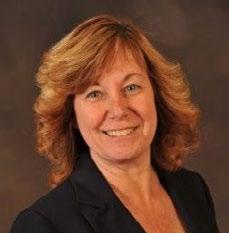
64 • Northeast Dairy Foods Association, Inc.





























NED Magazine | First Quarter 2023 • 65 Agri-Mark .............................................................................................................................. ................ 49 Agri-Services .............................................................................................................................. .......... 25 Atlas Automation 37 Byrne Dairy 29 CA REED .............................................................................................................................. ................... 15 Ecolab .............................................................................................................................. ........................ 17 Farm Credit East ������������������������������������������������������������������������������������������������������������� 21 HP Hood .............................................................................................................................. ................. IFC Nelson-Jameson 33 8 .............................................................................................................................. 19 .............................................................................................................................. 37 WestRock .............................................................................................................................. ................... A full service trade association representing dairy processors, manufacturers and distributors since 1928. nedairyfoods.org A supplier and vendor member association dedicated to the growth and advancement of the dairy food industry in the northeast. Established in 1932. neastda.org Join the Dairy Industry Associations WI NT E R EDITI O N 2 0 1 6 The Magazi ne of No r t heast Dair y Pr oc essors, Manufac turers and Distribu to rs Since 19 28 Advertisers’ Index
NDFA and NDSA members shared these posts on LinkedIn and Facebook
Yancey’s Fancy
Need some charcuterie board ideas for the upcoming holidays and new year events?

Check out the Charcuterie page on our website for cheese board ingredient ideas that will spark your creativity!
Eurofins
Back in the day, when there was a single Eurofins laboratory in France, samples would arrive through standard French post! Each morning, team members at the Nantes laboratory would eagerly check the mailbox to see what samples had arrived. Sometimes, it was barely enough to remain financially self-sufficient, so the team had to be patient and frugal!
Today, Eurofins companies perform a total of 450 million tests per year in 940 laboratories across the world world. We’ve come a long way since 1987!
Hansen-Rice, Inc.

Cheers to #40years; it’s our birthday! HRI has grown from a regional design-build contractor to an integrated solution provider of construction services supporting a broad range of clients nationwide. We are grateful for your continued trust and support over the past four decades and look forward to

Great Lakes Cheese Company
Yesterday marked an exciting step for our Great Lakes Cheese Family and nearby communities as we launched the grand opening of our newest site in Abilene, Texas! We have come a long way since breaking ground last spring, and could not be more grateful for our employee-owners and community partners who have shared this journey with us.
Thank you to all our employee-owners for your collaboration and bringing our ownership culture to life. We are eager and excited to begin production in Abilene, better service our customers, and strengthen our network in the dairy industry.





















































































































































































































































 BY COURTNEY KLESS EDITOR, NORTHEAST DAIRY MAGAZINE
BY COURTNEY KLESS EDITOR, NORTHEAST DAIRY MAGAZINE
























































































































 BY COURTNEY KLESS
BY COURTNEY KLESS















































































